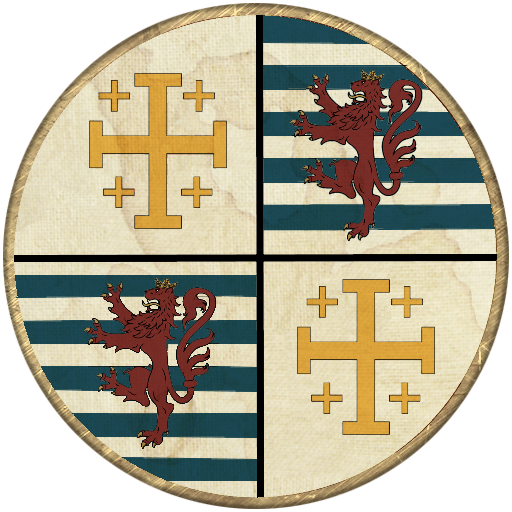
Outremer is a French term that literally means “overseas,” and in medieval times it was used to describe the Latin-controlled crusader states in the Levant.
The end of the 12th century nearly spelled the end for Outremer as Saladin’s war machine decimated the largest Latin army ever fielded by that Kingdom at the Horns of Hattin, and then set about systematically reducing nearly every stronghold in Outremer. Fortunately, the arrival and relative success of the Third Crusade breathed new life into the Kingdom. A tenuous foothold was regained along the Palestinian coast, centered around a strong base in Acre. More importantly, however, was the gift of the newly-conquered island of Cyprus to Guy de Lusignan by Richard the Lionheart. With Cyprus, the Latins gained a rich, prosperous land relatively safe from invaders from which to base their continued efforts to colonize Palestine and eventually regain the holy city of Jerusalem.
After the death of Guy’s brother Aimery in 1205, the dual crown of Jerusalem split between his young son Hugh and Maria de Montferrat. However, both were underage, leaving the rule largely to the regent, John de Ibelin, son of the famous Balian de Ibelin who negotiated the surrender of Jerusalem to Saladin. John was generally considered a wise and strong ruler, and served as regent until Hugh came of age in 1236. Elsewhere, the Ayyubid sultanate is failing, the Principality of Antioch is in the midst of civil war, and a new power rises in the East. Can the Kingdoms of Outremer survive the turmoil?
Units
Tactics
In Outremer, Westerners faced a very different sort of challenge when facing the muslims. The lightly-armored mounted bowmen that the Turks preferred to field avoided closing to do battle with the much more heavily-armored western knights. This resulted in a much earlier development of advanced infantry tactics among the Franks out east, and this is reflected in their unit roster.
Early units
Poulain Knights
Poulain was a French word for a Frank born in Outremer. They retain western traditions and the knightly style of fighting, but have a distinctly eastern flavor to their appearance, described by chroniclers as wearing eastern clothing and sporting eastern-style beards. The Poulains were colonists, and often preferred to coexist with their neighbors rather than engage in constant warfare. This sentiment led to a general disdain for Poulains among western crusaders, who couldn’t fathom coexisting with the infidel. Dismounted, they use their lances in a defensive formation to provide a strong screen to protect the heavy cavalry so that they can make a decisive charge at the opportune moment.
Ministeriales
Free noblemen can be uncooperative, especially when you want them to leave their comfortable estates in Cyprus to go defend the much poorer, arid lands in Palestine. The ministeriale class was created in the middle ages to be a class of serf-nobility who could hold office and serve in their lord's military without having the same rights as a nobleman. This unit has one purpose, and that is to use their fast horses and javelins to chase down mounted skirmishers. They can hold their own in a one-on-one fight with most archer cavalry.
Ministeriale Foot Soldiers
Dismounted, the ministeriales form a reliable spear wall to screen the cavalry.
Poulain Crossbowmen
Crossbowmen were an essential part of combat for Latin armies fighting in the east. The Poulains are a light unit of crossbows.
Maronite Levies
Local Christians were often called upon to serve their western overlords. The Latins ranked them from most to least reliable. Greeks were at the very bottom, while Maronite Christians were considered the most reliable of all local non-latin troops. This and the skirmisher unit represent the hodgepodge of local levies who would have fought for the crusader states.
Maronite Skirmishers
King of Jerusalem and Cyprus
This is a general unit with a detachment of heavy Poulain knights.
Crusader Knights
Though crusading to Outremer was beginning to lose its popularity by the 13th Century, there were still a large number of soldiers and kings to be found making their way East to fight for the King of Jerusalem and to regain the holy land from the infidel. These men came from all over Europe, and must have formed quite the hodgepodge of equipment, practices, and tongues. They brought with them an intense crusading fervor and hatred for all ‘infidels.’ It’s no wonder the Poulains dreaded the arrival of crusading armies.
Crusader Dismounted Knights
The middle east is not a friendly climate for the large horses used by western knights. As a result, crusading knights were often forced to fight on foot. This resulted in a somewhat unique (for the period) style of infantry fighting. These knights fought using their lances in a screen for defense. Historically they were not disciplined enough to advance in order (an innovation made later by the Swiss), but they can form a powerful defensive line, and use their swords in the attack if they are forced to go on the offensive.
Crusader Northmen
Dismounted crusaders from the far north who use their terrible long-axes to great effect.
Crusader Marksmen
Men from certain lands in the North used long war-bows instead of crossbows or the traditional short bow you find with most Europeans.
Crusader Crossbowmen
Essential soldiers for combat in the eastern Mediterranean. Crossbows were worth their weight in gold to the military commanders of Outremer. Most crossbowmen who fought in the east were mercenaries.
Crusader Sergeants (Mounted and Dismounted versions)
Servants and support personnel, sometimes knights in training, or nobles who cannot afford a knighthood.
Templar and Hospitaller Knight-Brothers (Mounted and Dismounted versions)
Knights pledged to the military orders had something that most soldiers of the time did not--fierce discipline. These heavy shock troops fight like western knights, but are better trained at fighting as a unit, able to form a number of defensive formations to protect themselves from enemy projectiles, and they have very high morale. They were feared by the muslims such that they were often executed on the spot if captured, being too dangerous to ransom or to keep as slaves. These knight-brethren and were the elite units of the Kingdoms of Outremer. In reality there were more Military orders than these two fighting in Outremer, but none could produce the same large numbers of troops on that theater as the order of St. John and the Order of the Temple. Also, since the Teutonic Knights have their own faction, I don’t plan to include them on the roster for Jerusalem and Cyprus.
For the Hospitallers in particular, the 13th Century saw a major transition period in their uniform. As such, in order to reflect the entire century, I have included a fair amount of variation. This will reflect the change from the early cappa and garnache described in the clothing record of 1206(robe-like garment) to the later black surcoats proscribed by Pope Innocent IV in 1248, then the final shift to their distinctive red surcoats and jupons described by Pope Alexander IV in 1259. There is no real agreement on what color the hospitallers painted their shields that early, and although my own belief is that they painted them red to match their banner, black shields are also popular, so I included both.
Templar and Hospitaller Crossbowmen
Do I need to say it again? Crossbows were important.
Templar and Hospitaller Sergeants (Mounted and Dismounted versions)
Non-knight brothers of one of the military orders. In reality, records show that they were almost always less numerous than the knight-brothers, and most often filled non-military roles. Melee cavalry. Dismounted they fight as disciplined infantry like the knight-brothers, but less well-equipped.
Unlike the Templars, the uniform for sergeant-brothers of the Order of St. John would have been the same as knight-brothers (except for lighter equipment). The one exception to this was for a 20-year period in the 13th century. However, in order to make them more easily distinguishable on the battlefield, I have decided to dress them in the distinctive brown uniform, as described by Pope Alexander IV in his 1259 decree. Some variation is added to reflect further uniform changes during that century.
Templar Confraters
Confraters were ordinary laymen who were associated with one of the military orders but did not typically become full bretheren. They were pledged to defend the Order. Many important men were confraters, including the Count of Tripoli and the Prince of Antioch, as well as the Kings of France and Aragon.
Hospitaller Donati
Donati were men who had applied to become a brother of one of the military orders. They often had to travel to the Middle East at their own expense and wait for the bureaucratic process of verifying their lineage to be accepted into the order.
Templar Mounted Crossbowmen
Hospitaller Turcopolier
The most important and reliable mercenaries in the east were called Turcopoles. There is not a whole lot of detail as to what exactly a turcopole was or how exactly they differed from other mercenaries. Generally, they are believed to have been horse archers, eastern christians or muslims who had converted to Christianity. Whatever they were, they were important enough that the Hospitallers created a high-ranking office within the order whose sole purpose was managing them, called the Turcopolier.
High-Era units
King of Jerusalem and Cyprus
Hospitaller Caravan
After Acre fell in 1291, the Order of St. John conquered Rhodes and shifted their focus to naval warfare. A 'Caravan' was what the hospitallers called a raid or campaign, and each brother was expected to complete at least three 'caravans' before they could hold office within the order. Caravans were often teams of two war galleys that would work in tandem, each galley carried roughly 60 fighting men, so this unit is a representation of two galleys who had disembarked their crews. Crossbows were of utmost importance for naval warfare at the time, so these men carry crossbows, and are made up of hardy knight-brothers, sergeant-brothers, and various mercenary seamen which would have been found serving on hospitaller galleys. They are lightly armored, but carry large shields and swords, making them decent melee infantry as well.
Hospitaller Knights (Mounted and Dismounted versions)
Most often, the Knights of Rhodes would have fought in caravans at sea in the 14th-century onward, but they still made a formidable force on land. Muslim source accounts abound with descriptions of terrifying, armor-clad men with terrible long-axes. On horseback they fight with the traditional spear and lance, and on land they carve up enemies with their great pollaxes.
Crusader Knights
Crusader Marksmen
Crusader Spear Sergeants
Crusader Crossbowmen
Poulain Knights
Hospitaller Turcopolier
Bonus pics of the units in action:

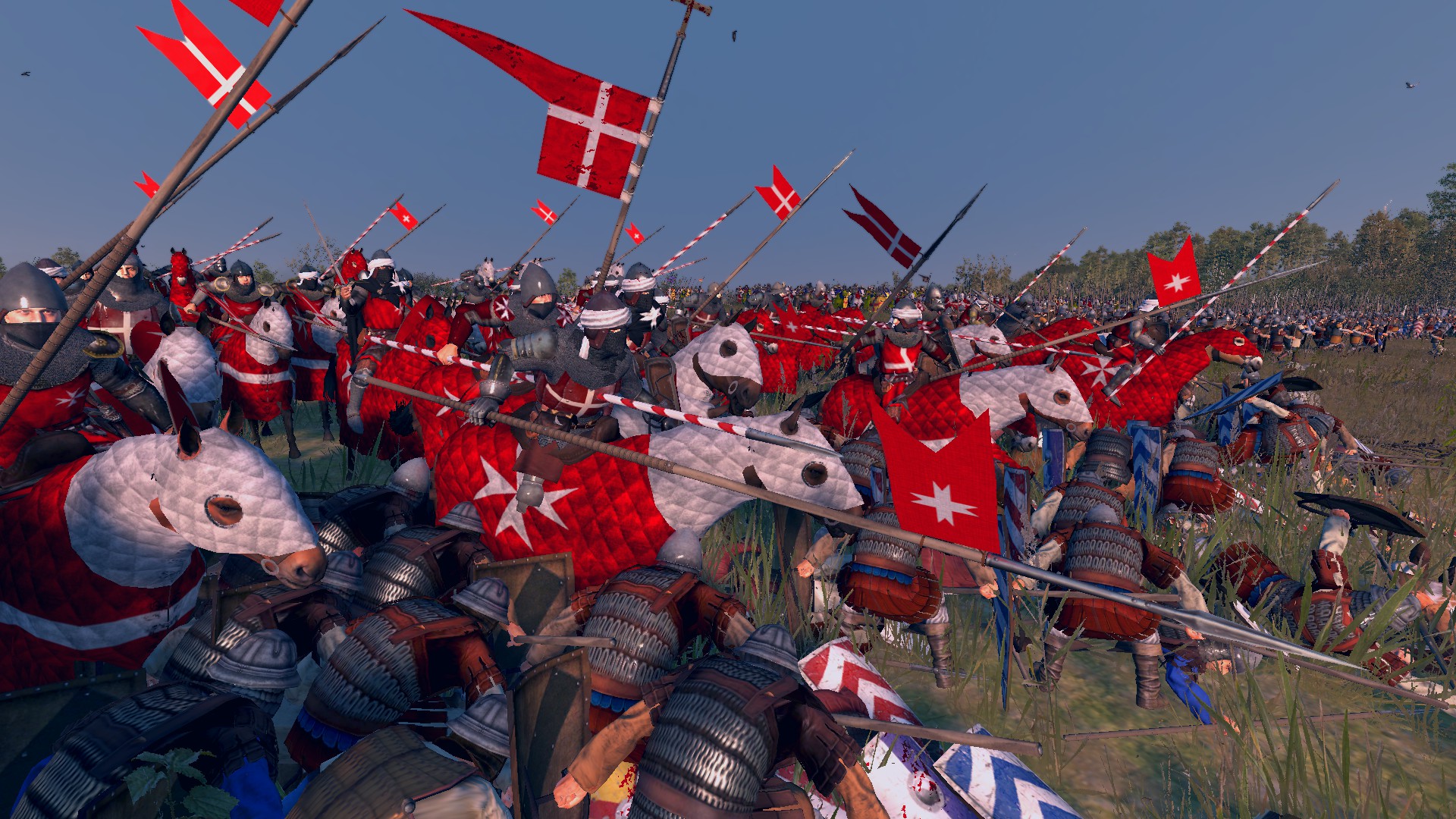

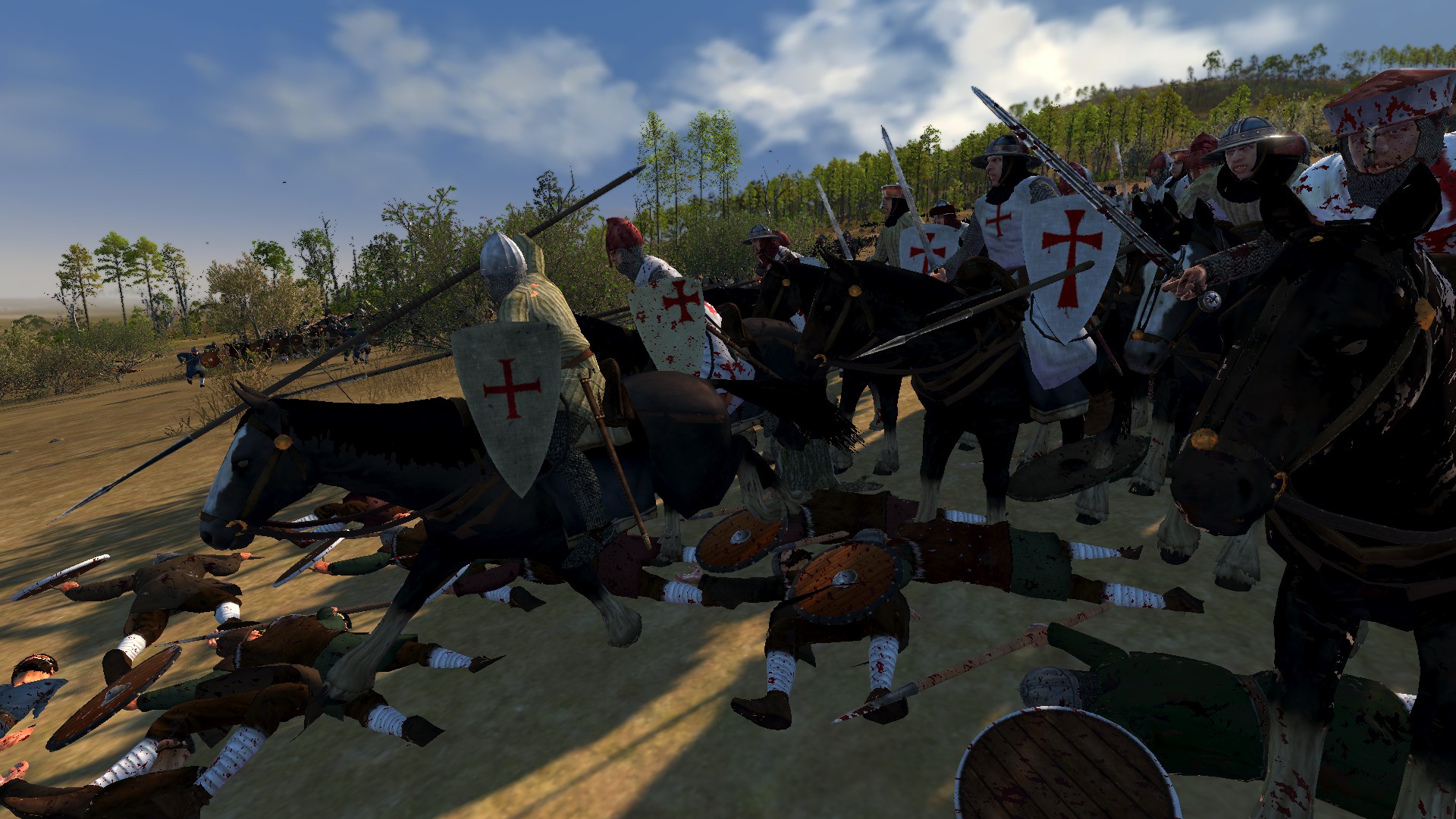
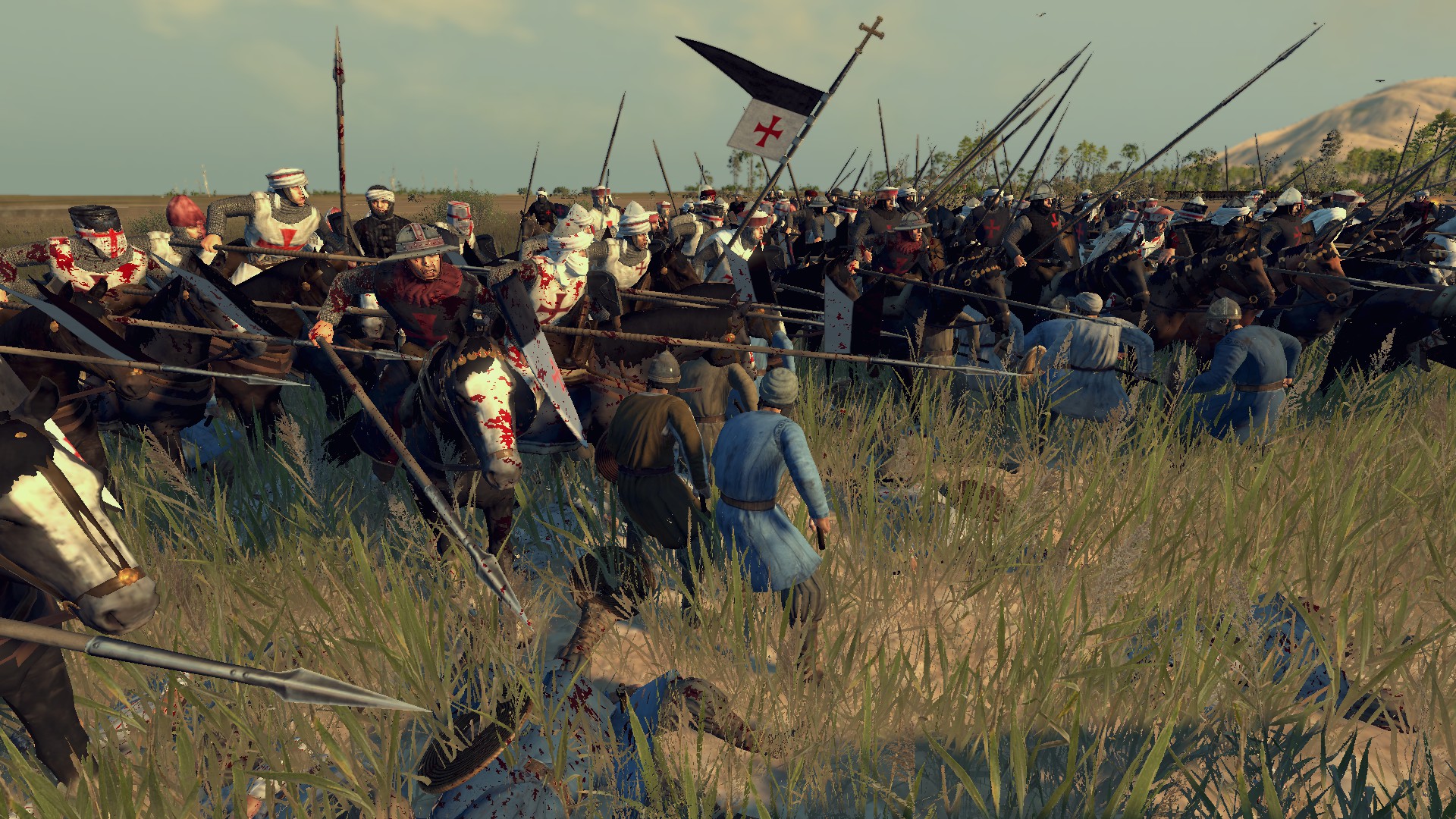

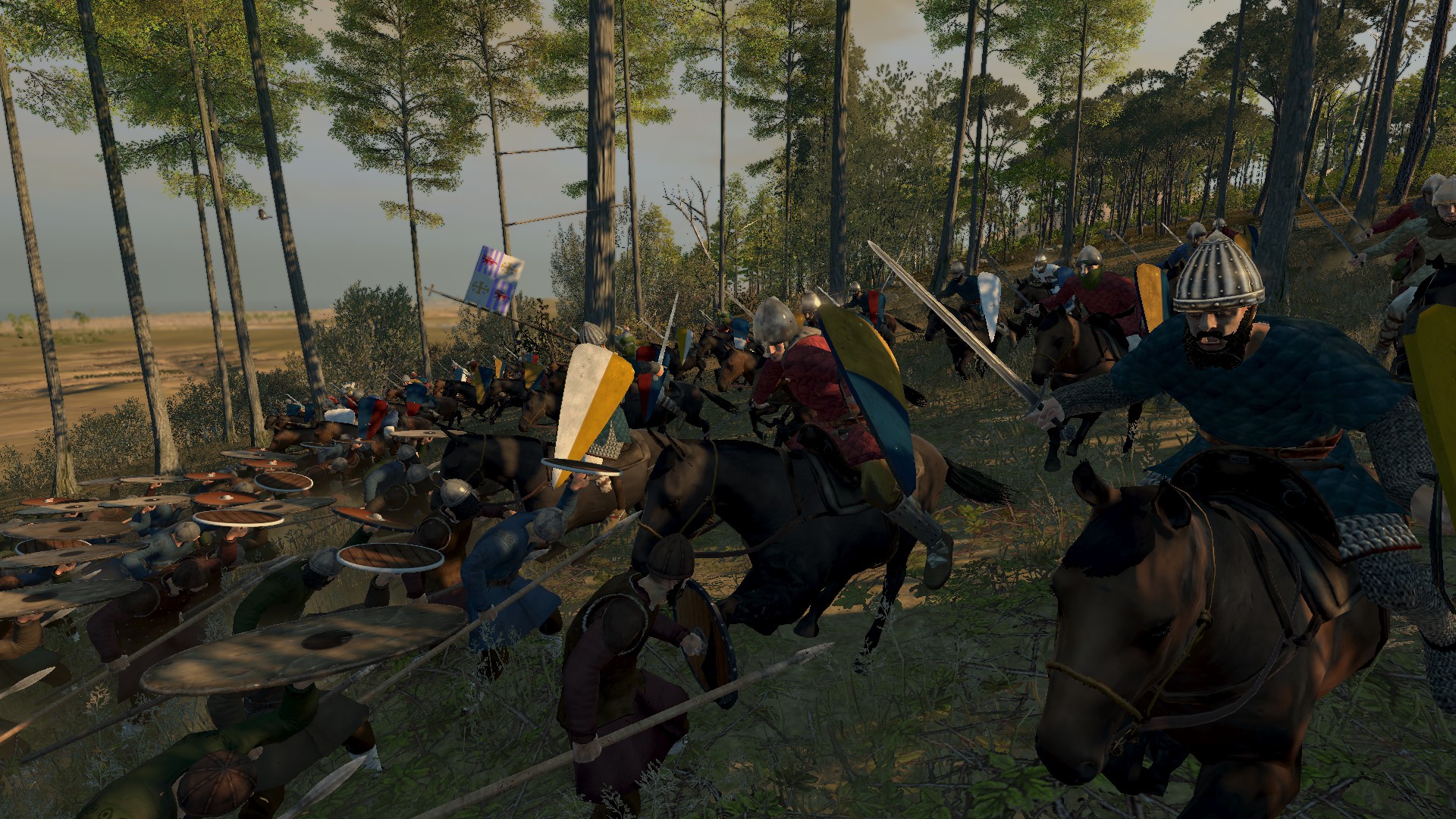

Detail of some of the officer armor and such:
I’m awaiting some new assets to expand the roster, but look for more here in the coming months!
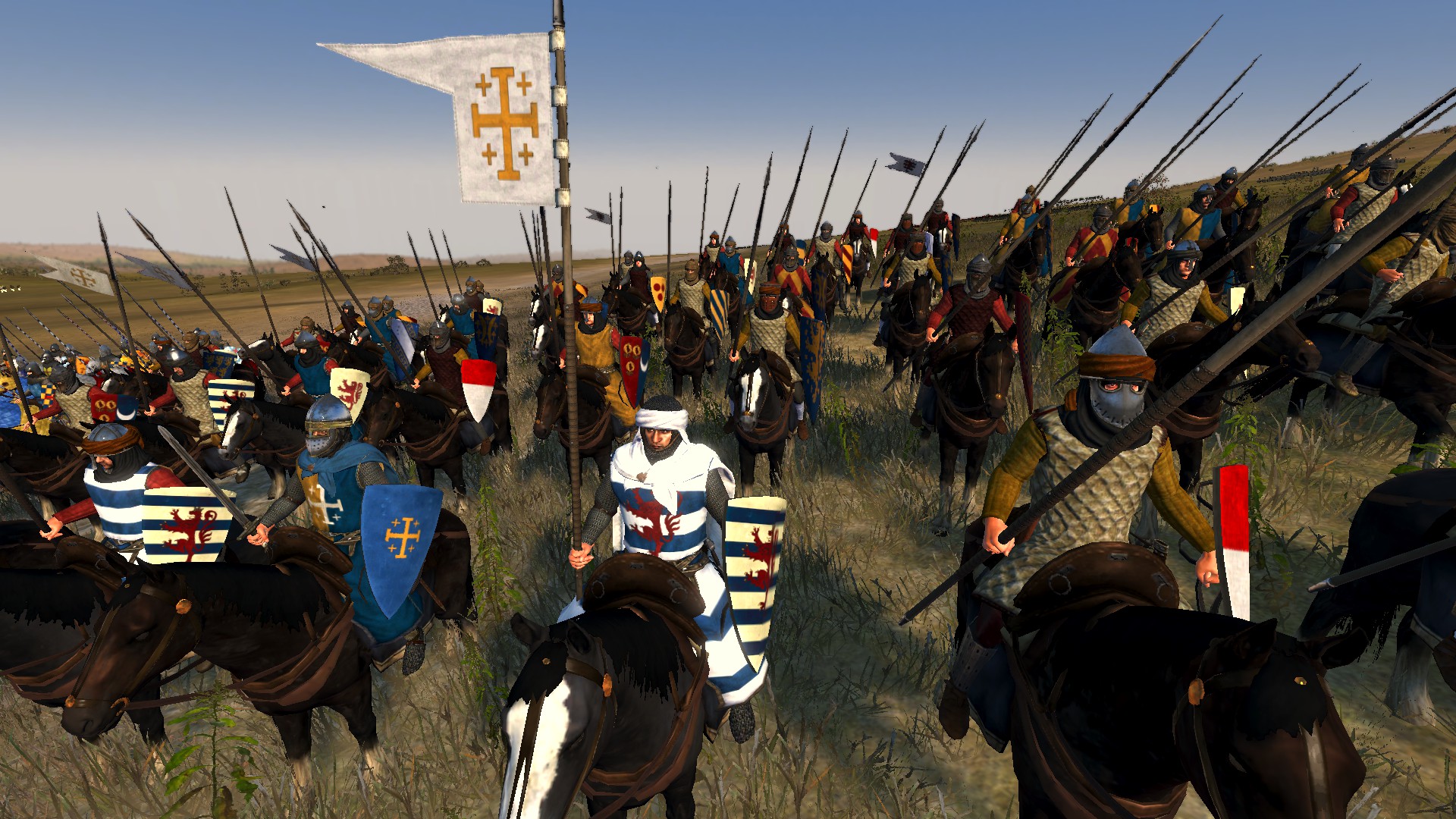
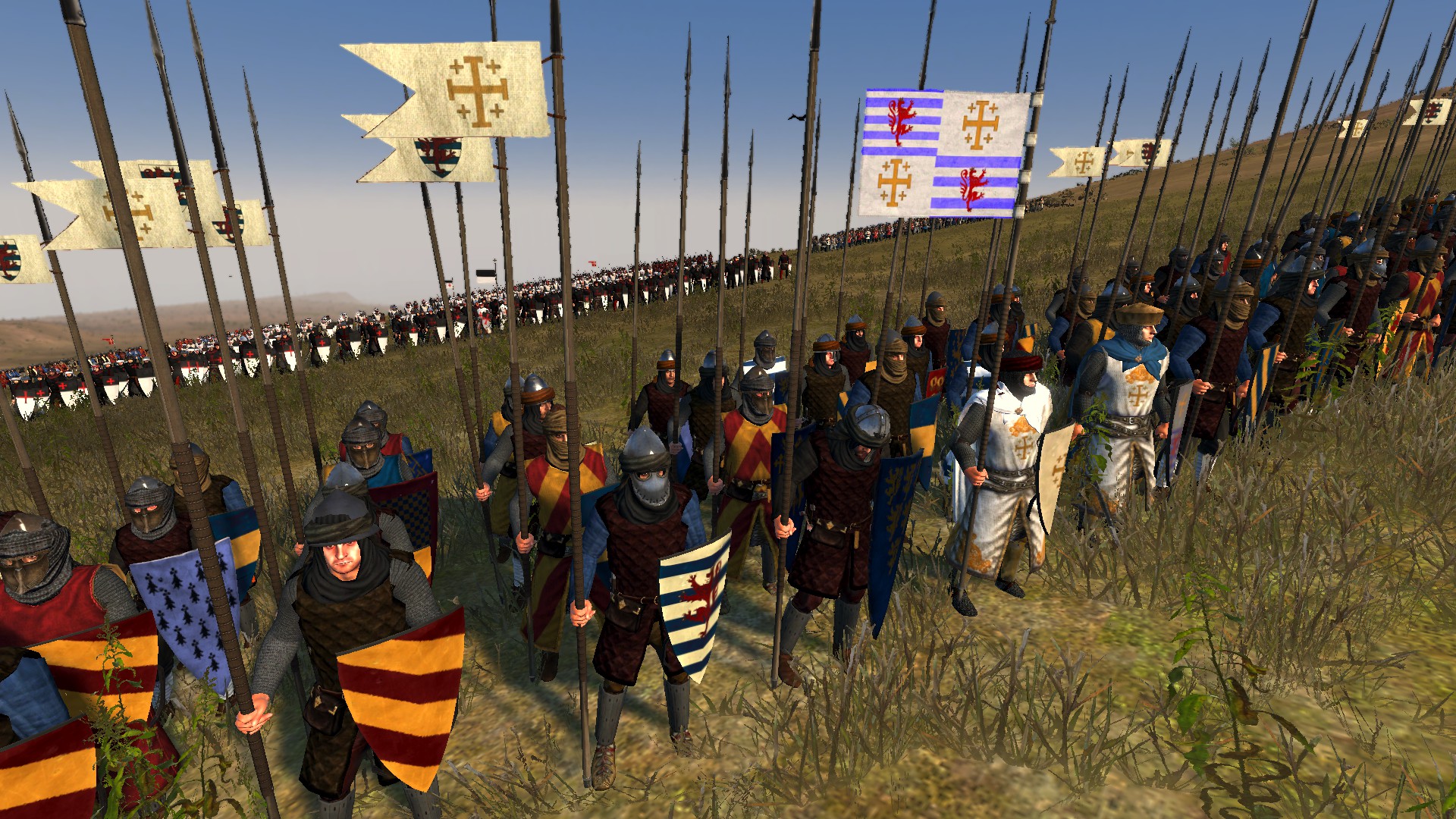
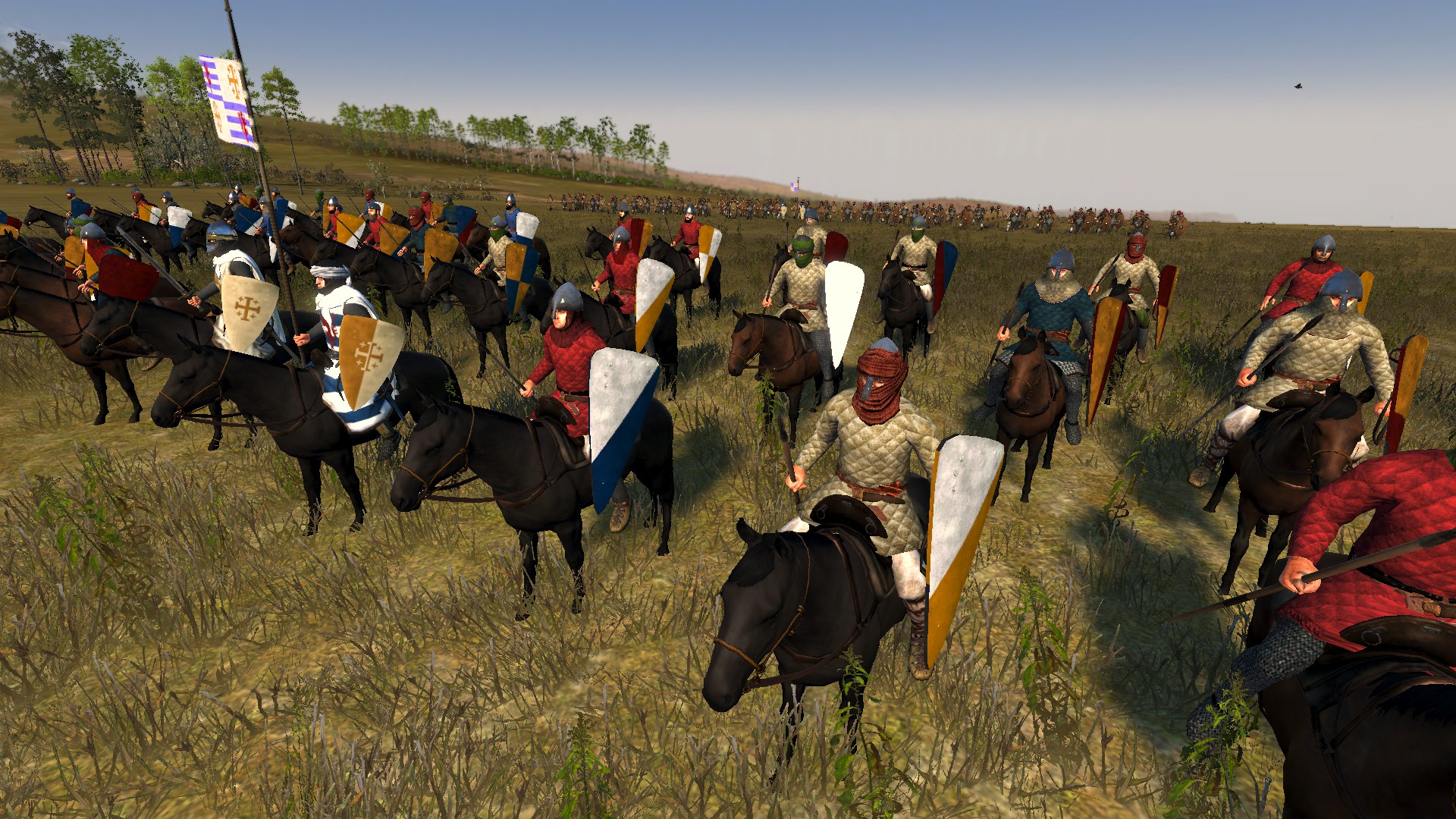
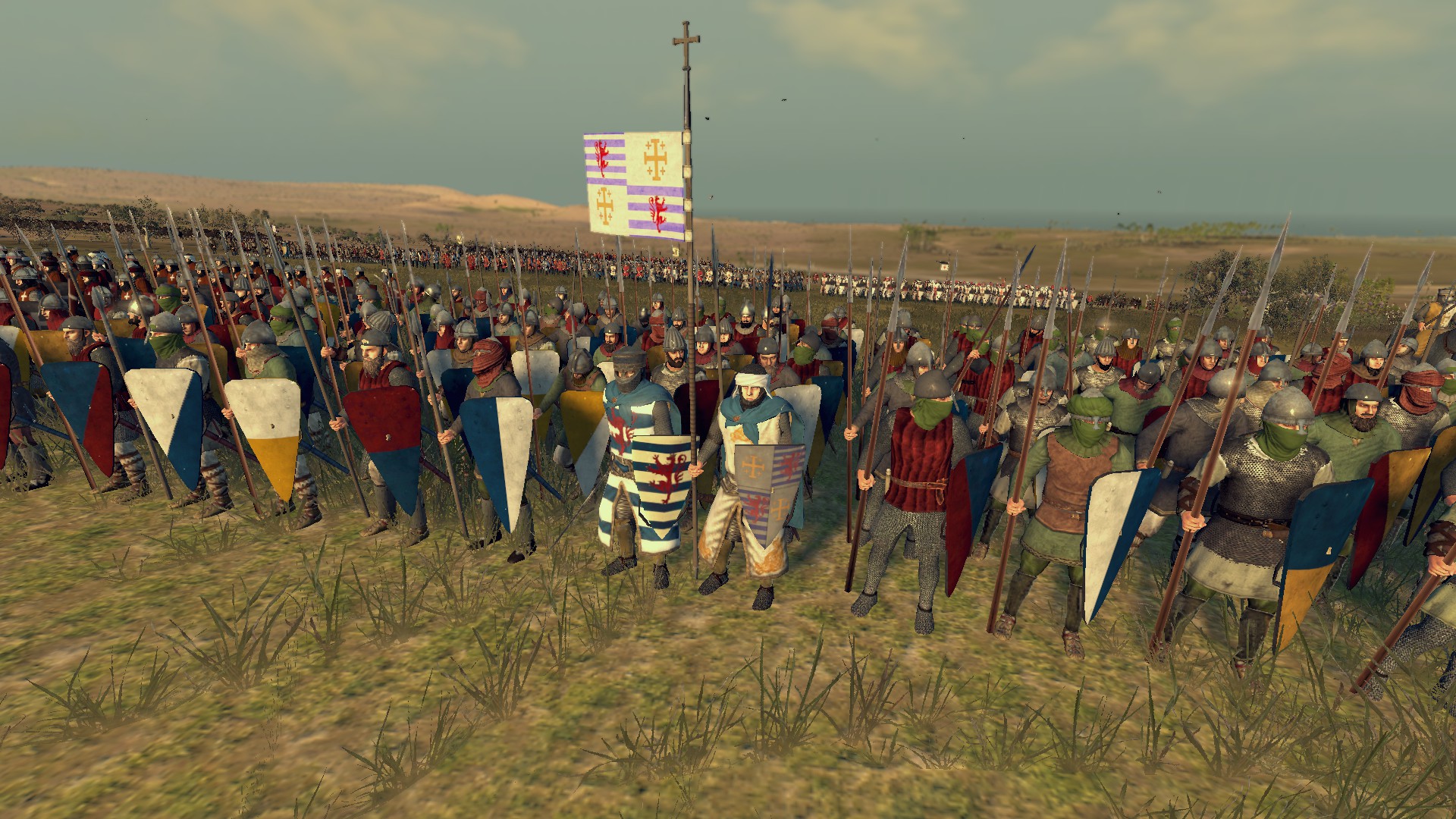
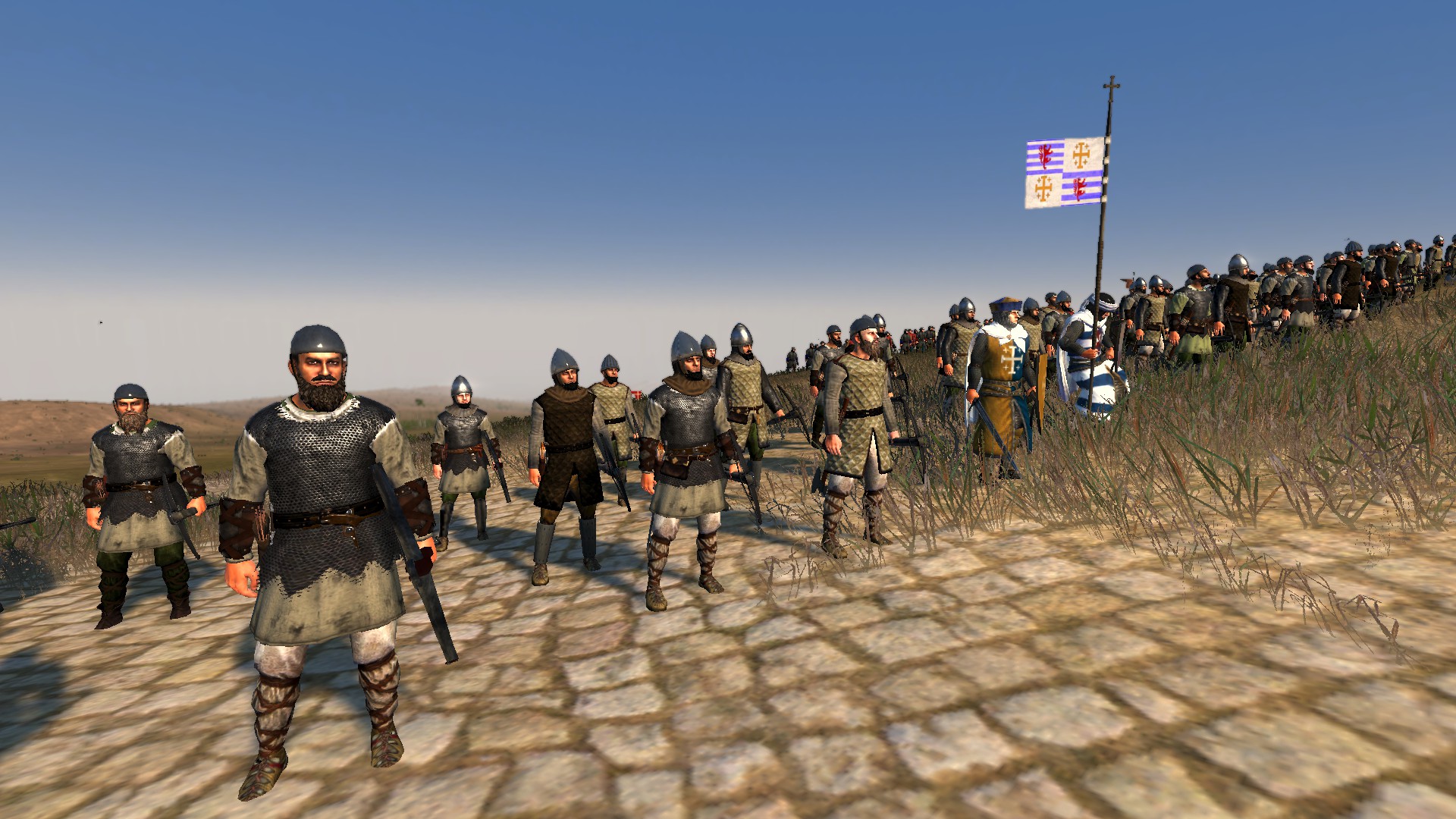


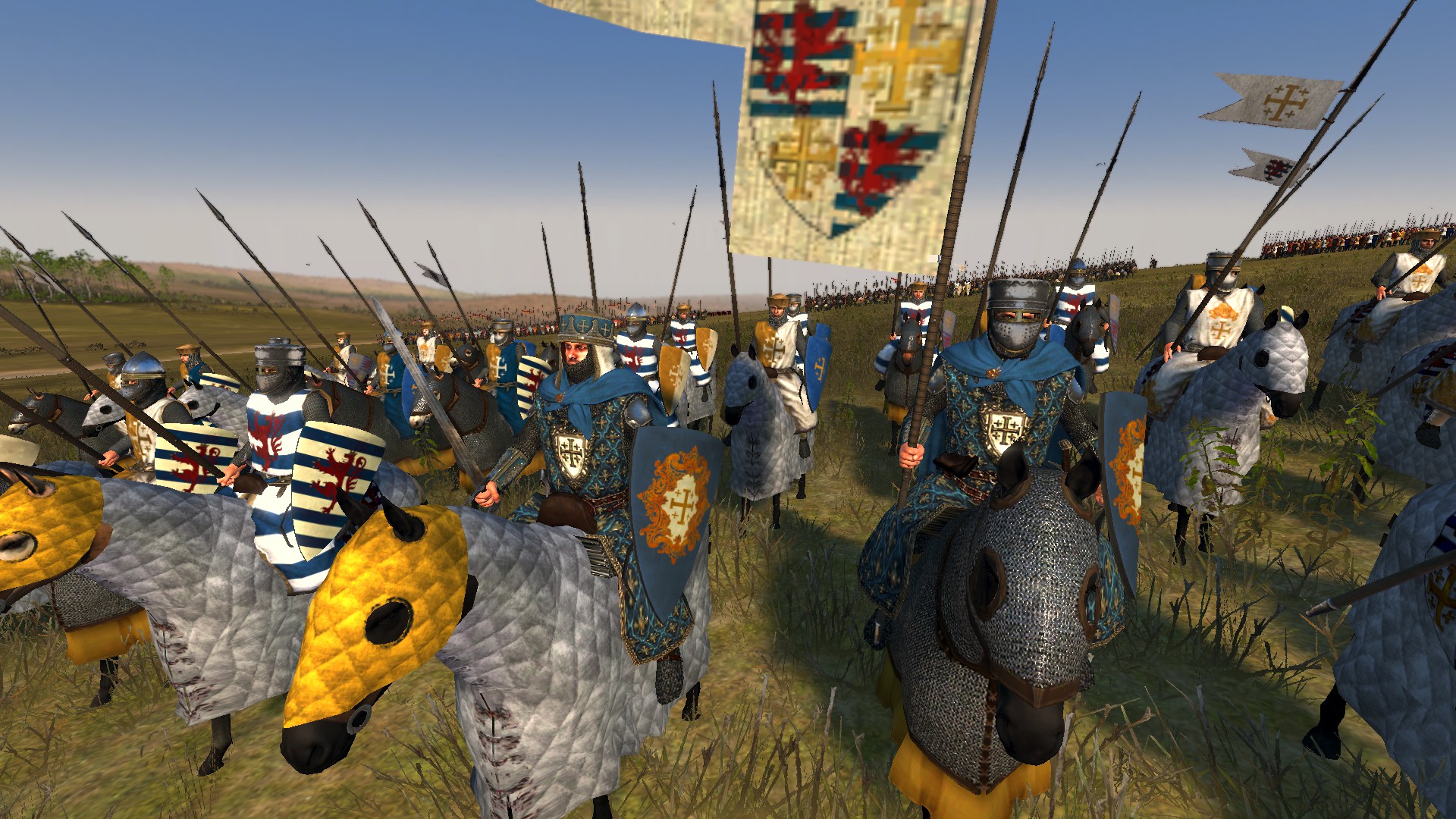

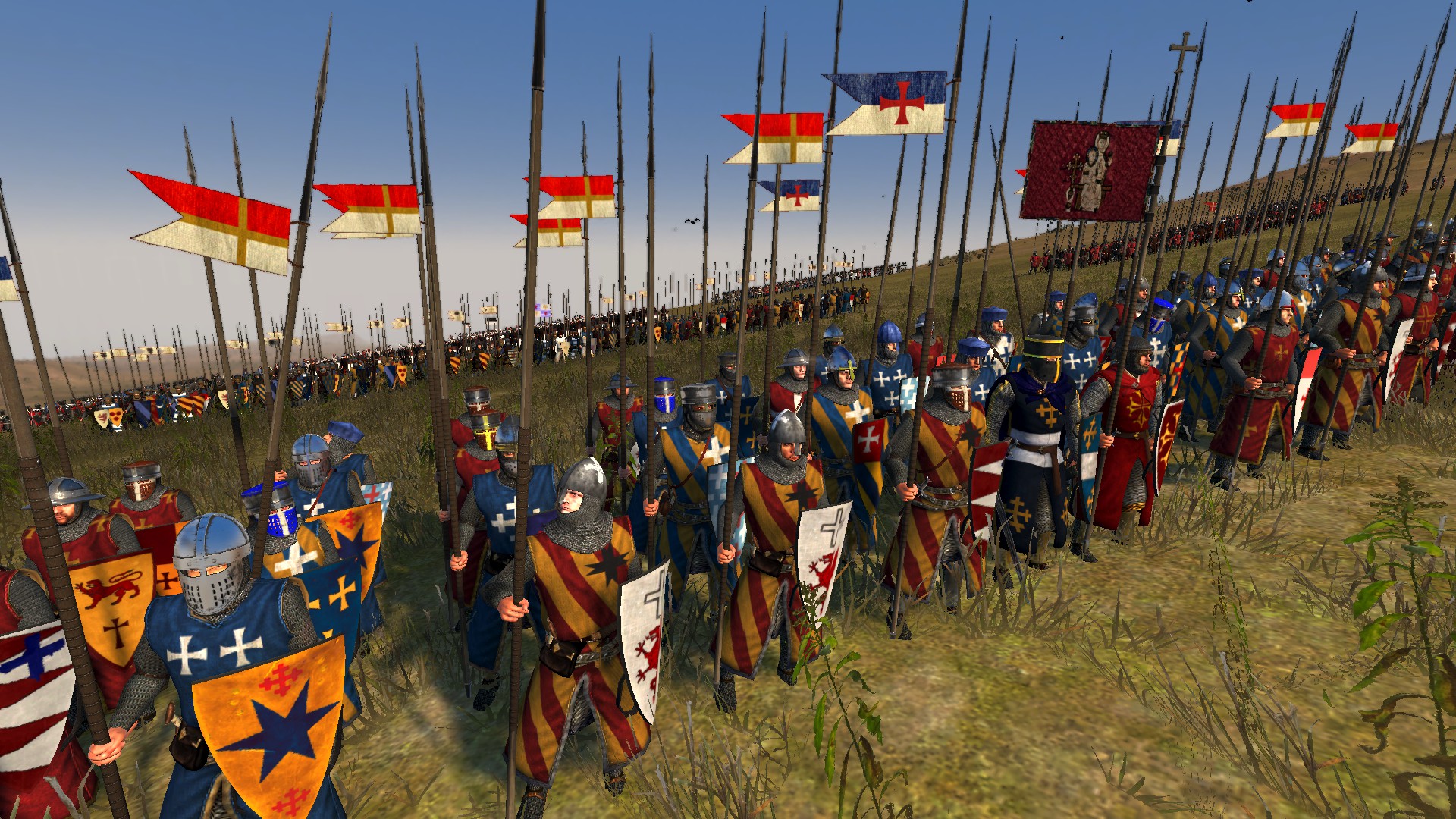
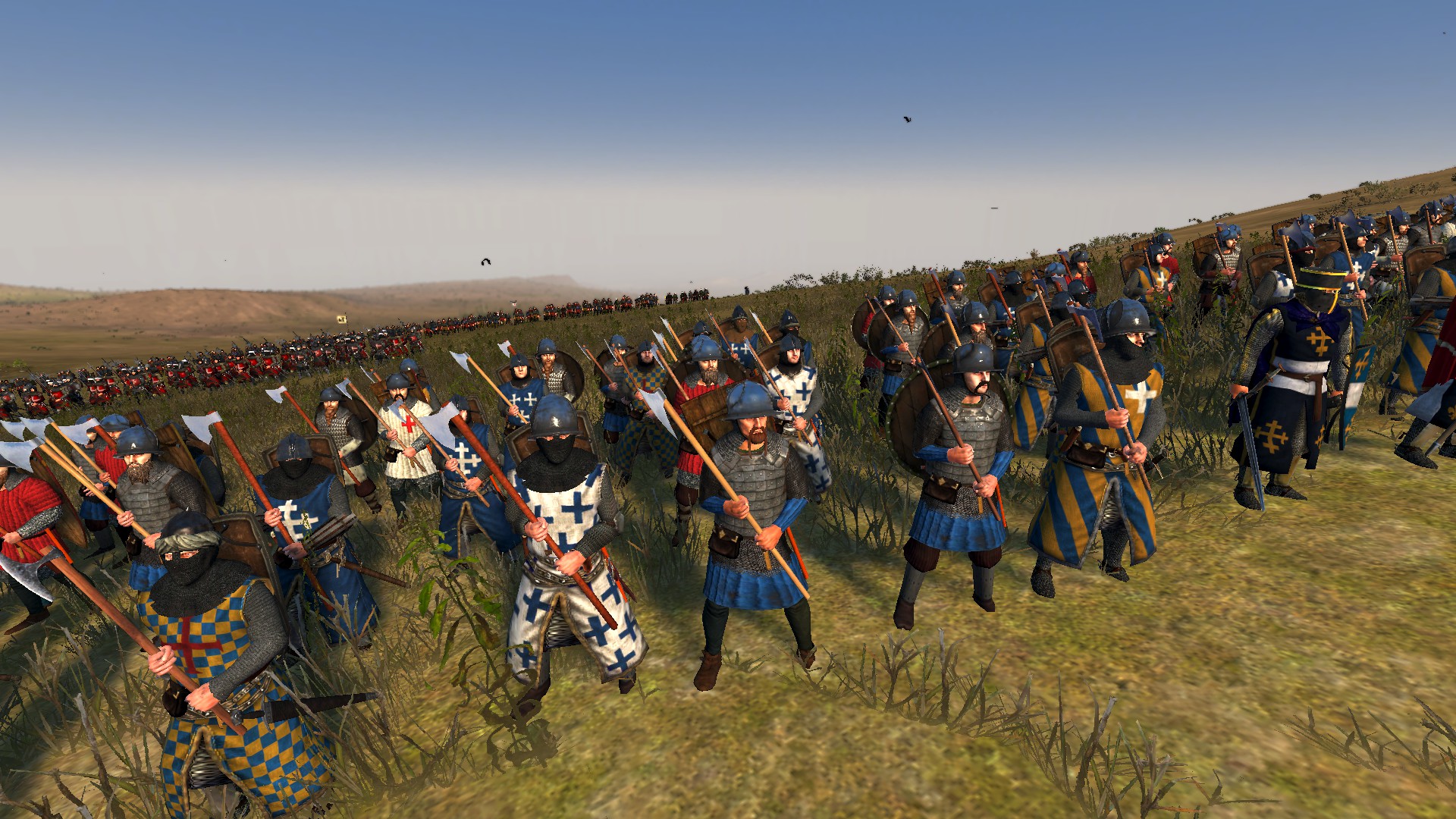
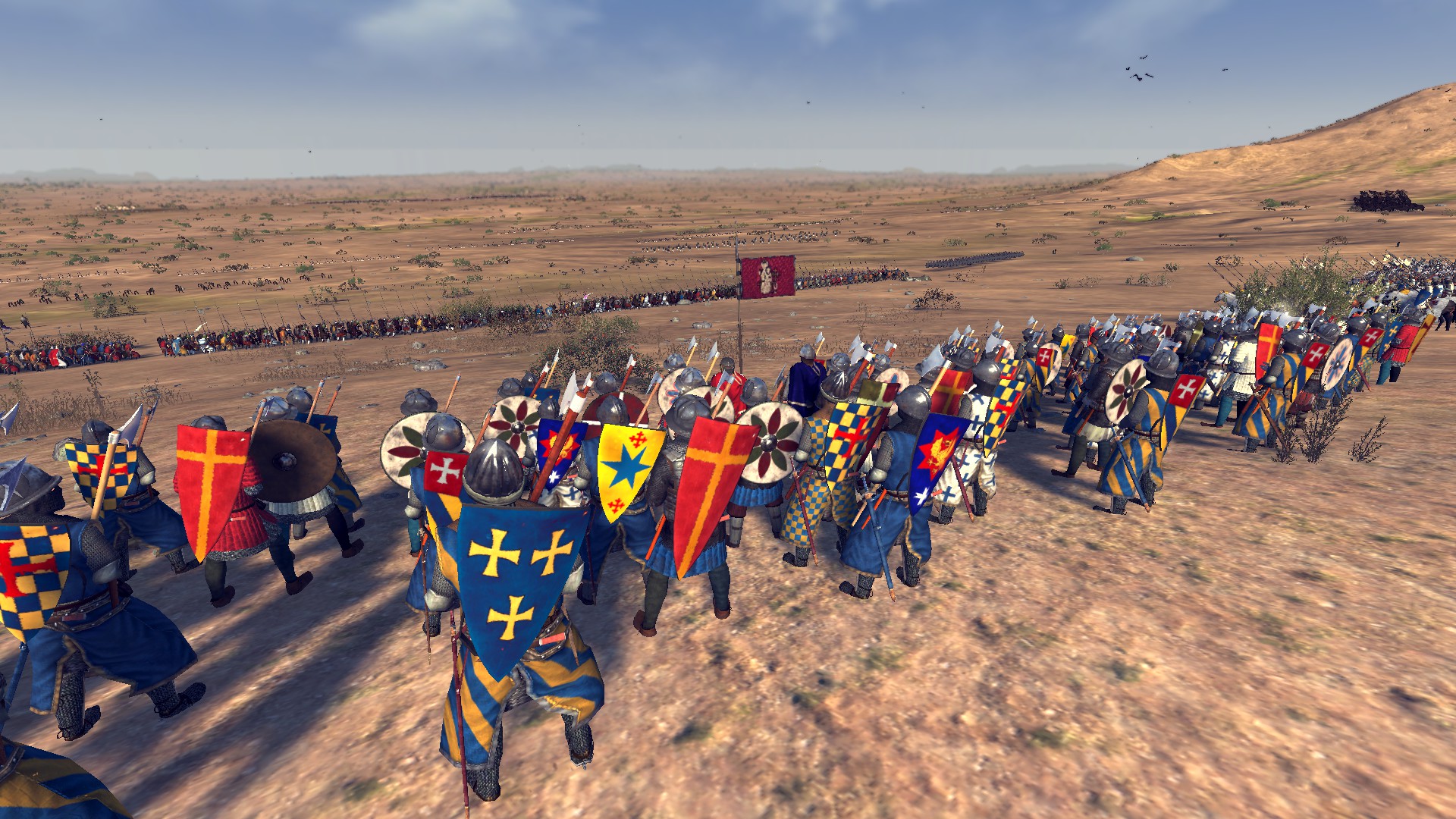
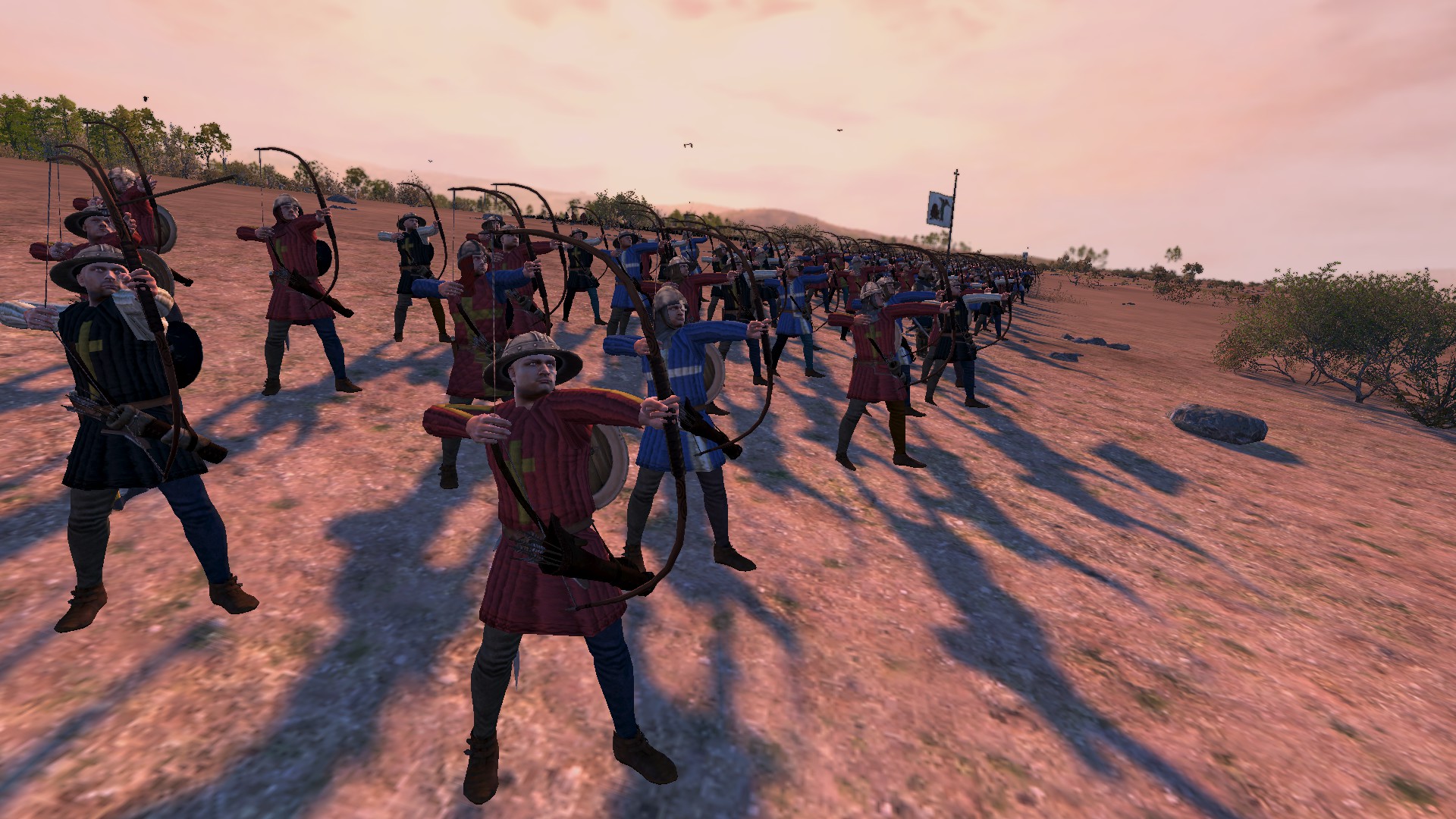
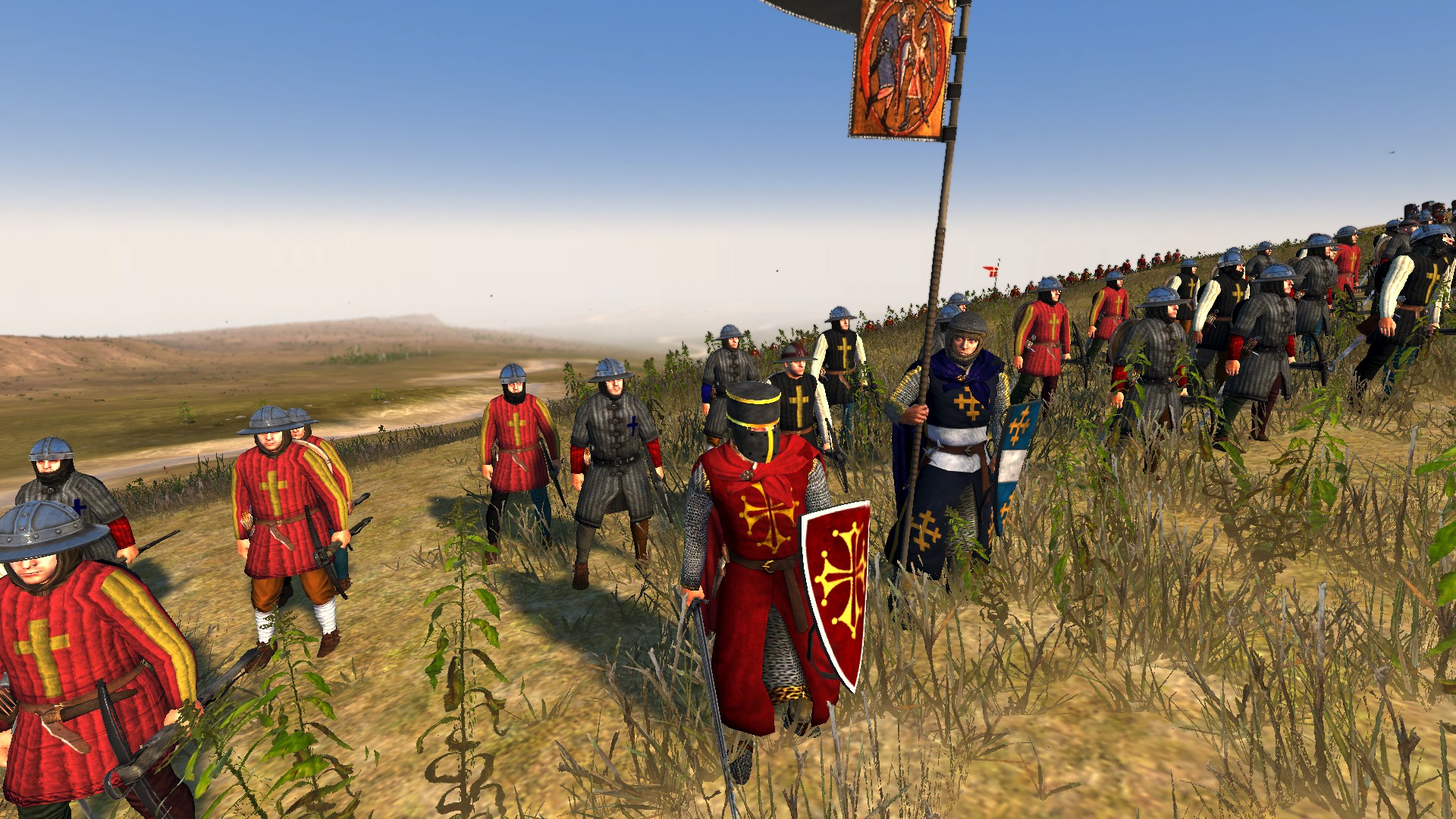

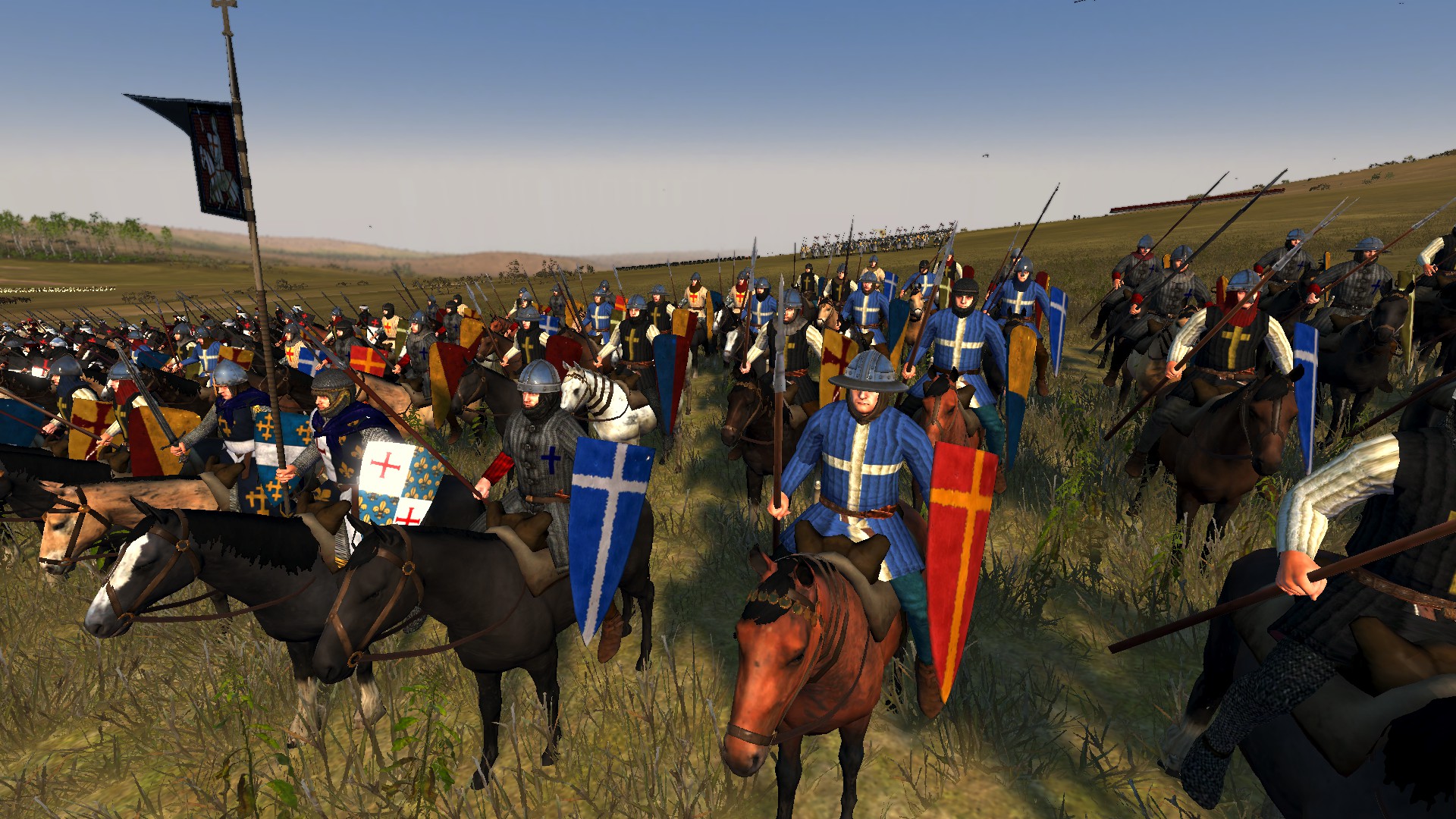
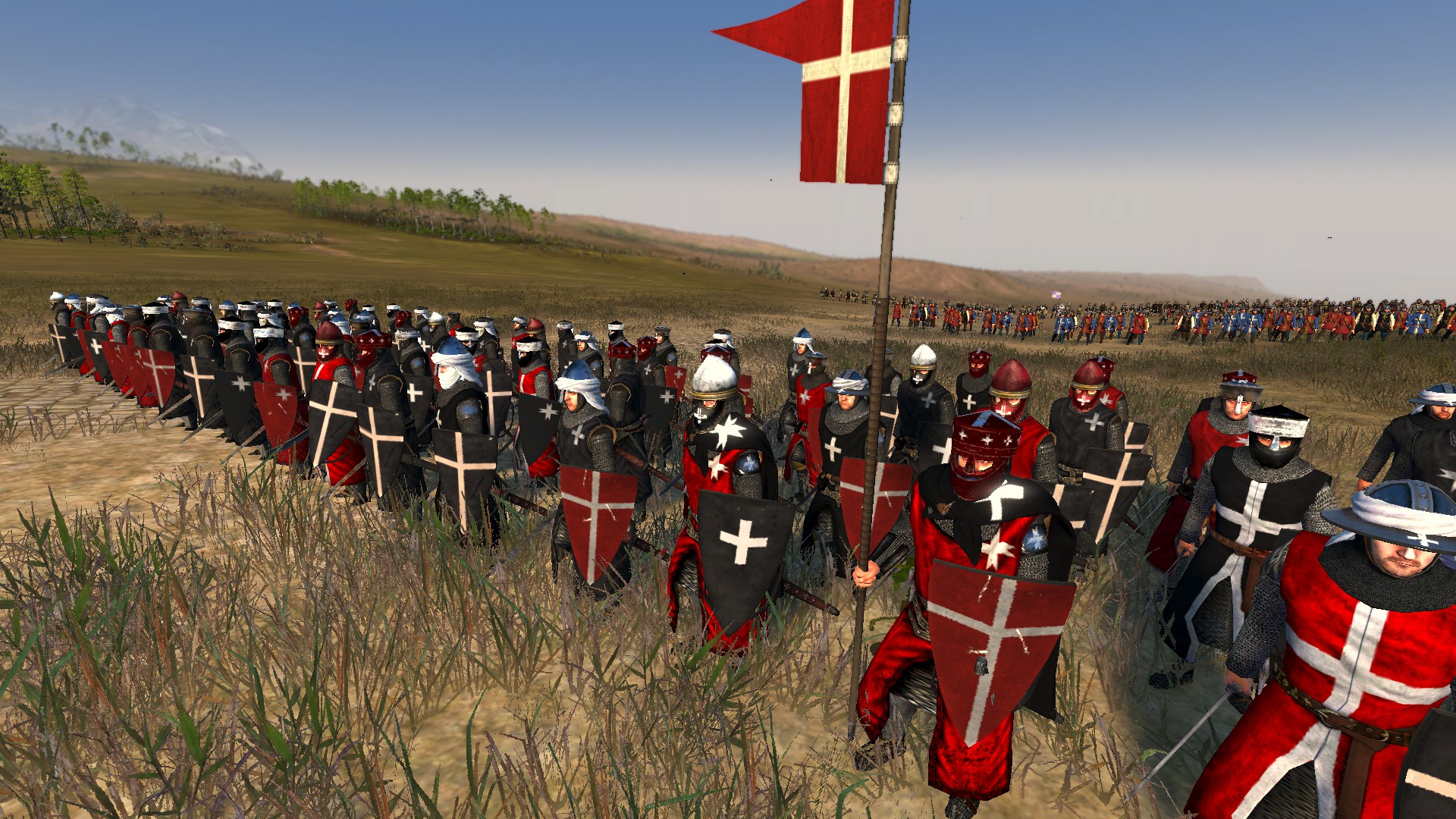

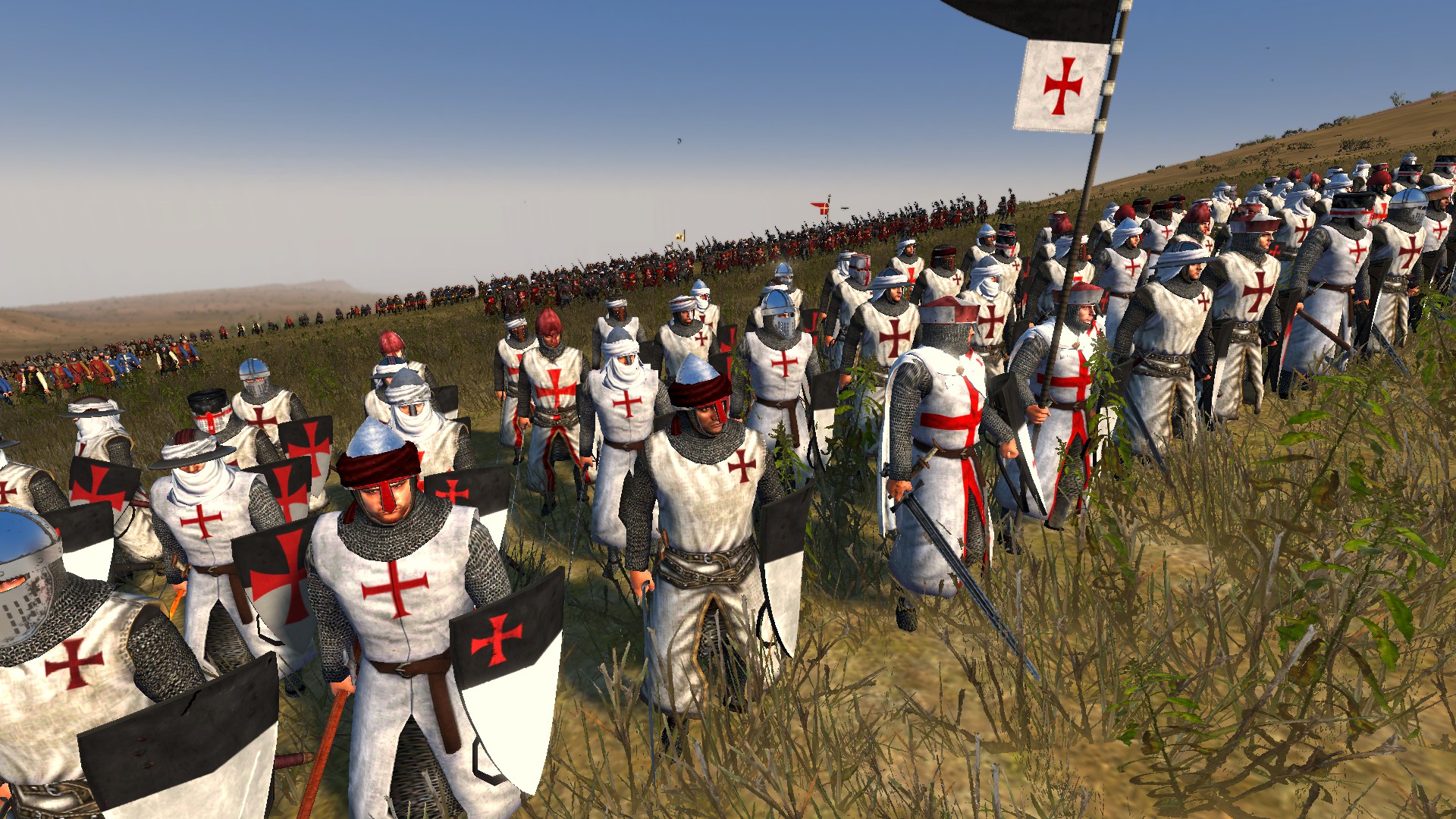


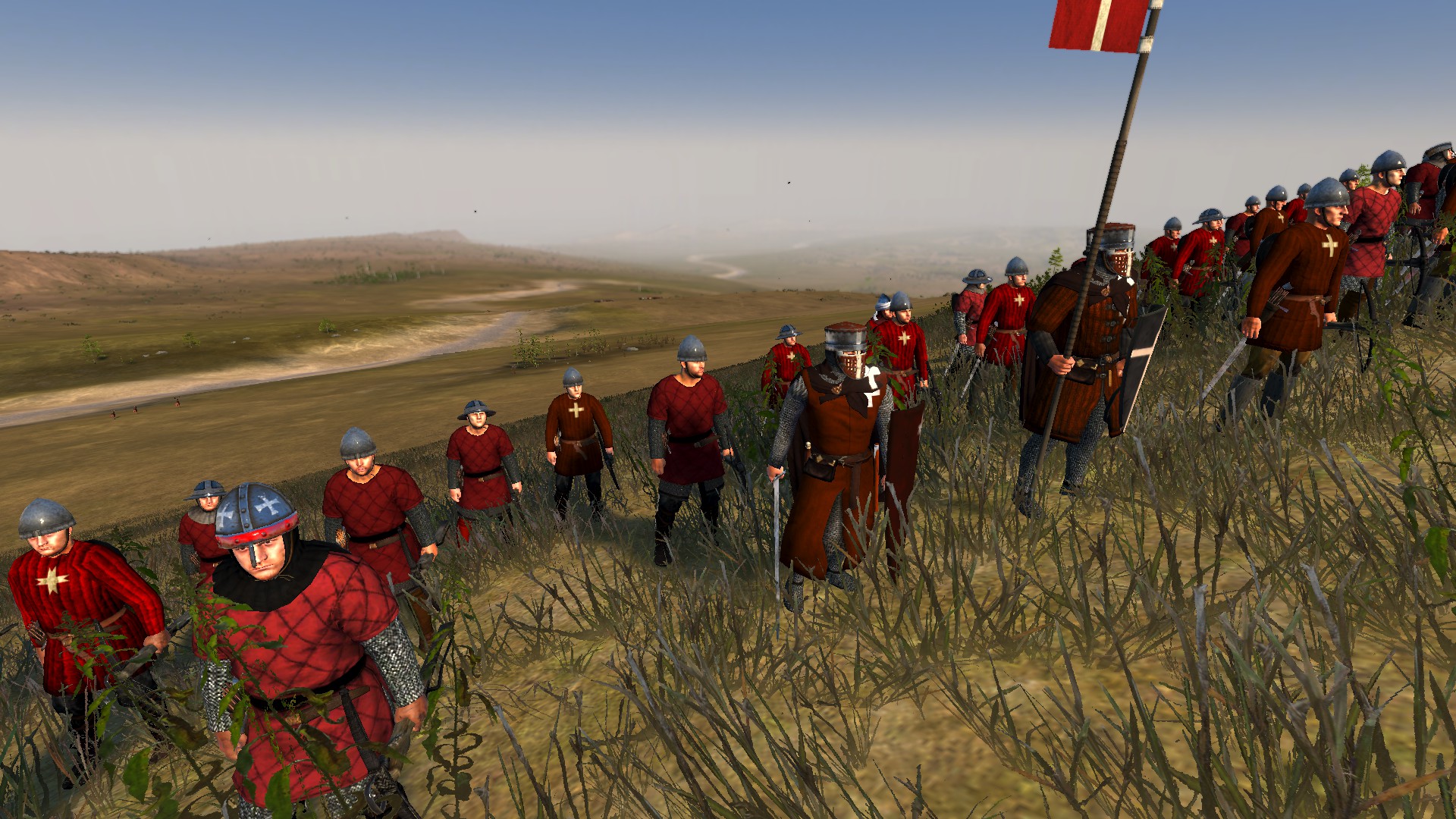


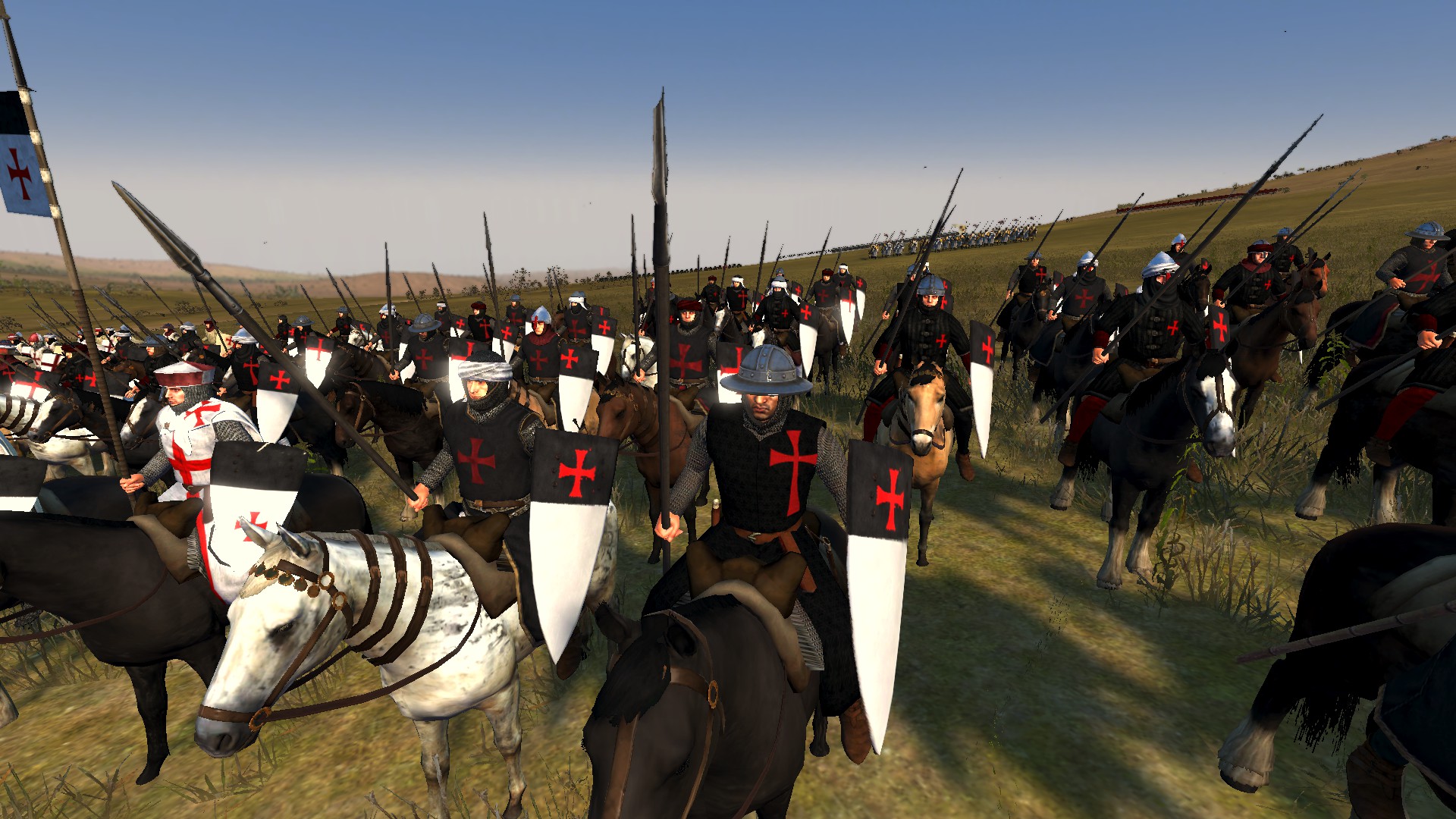
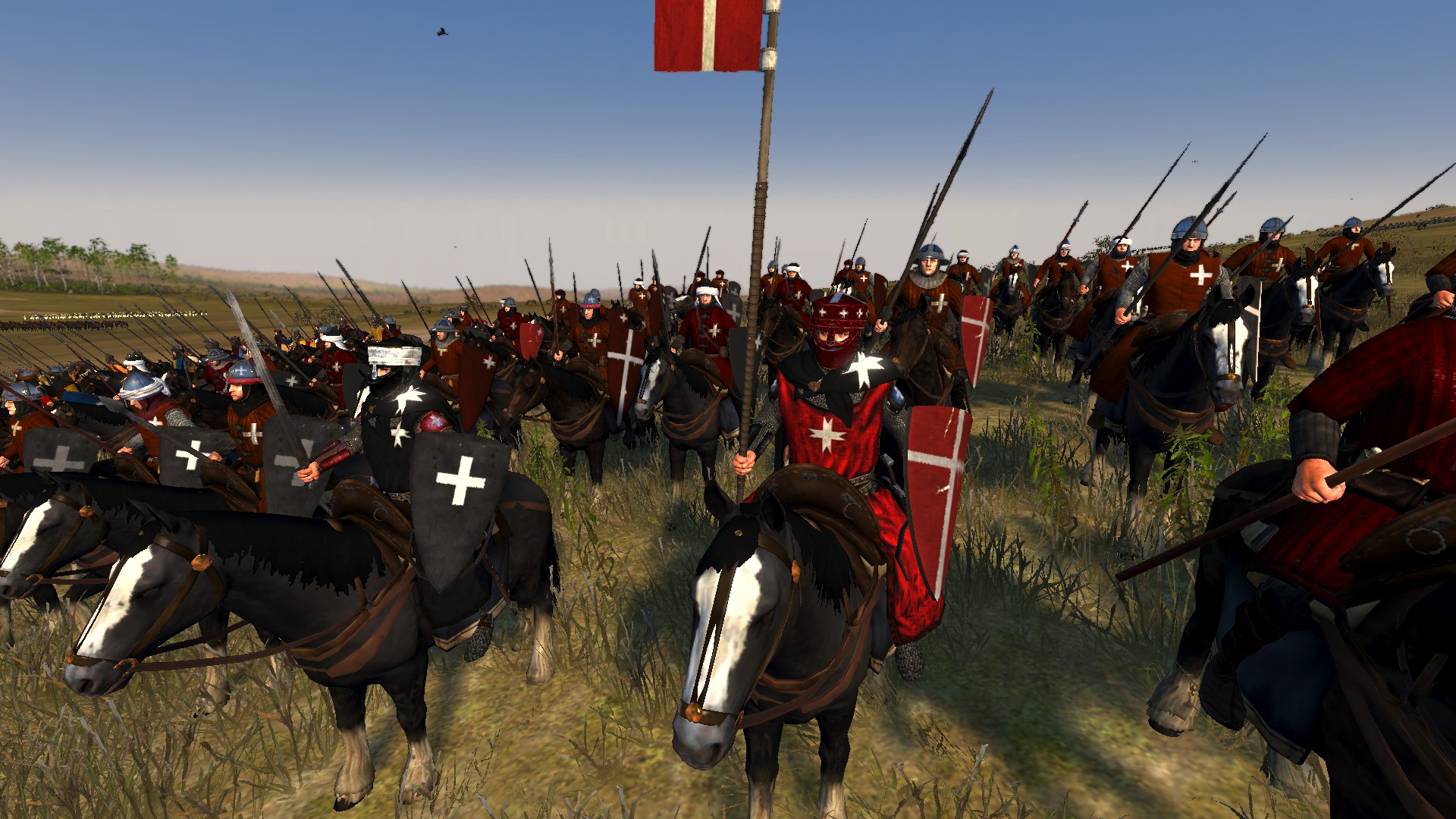
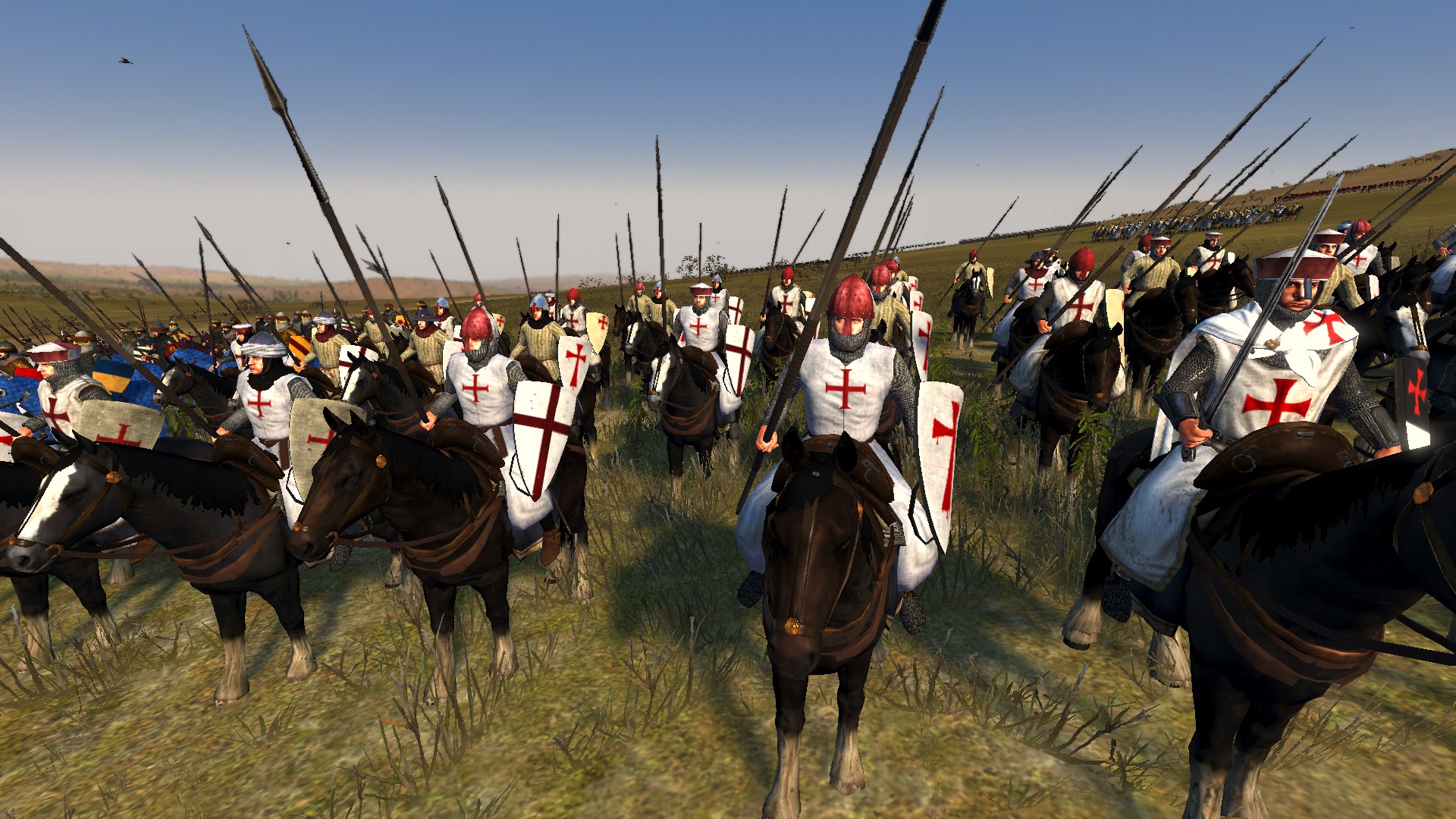
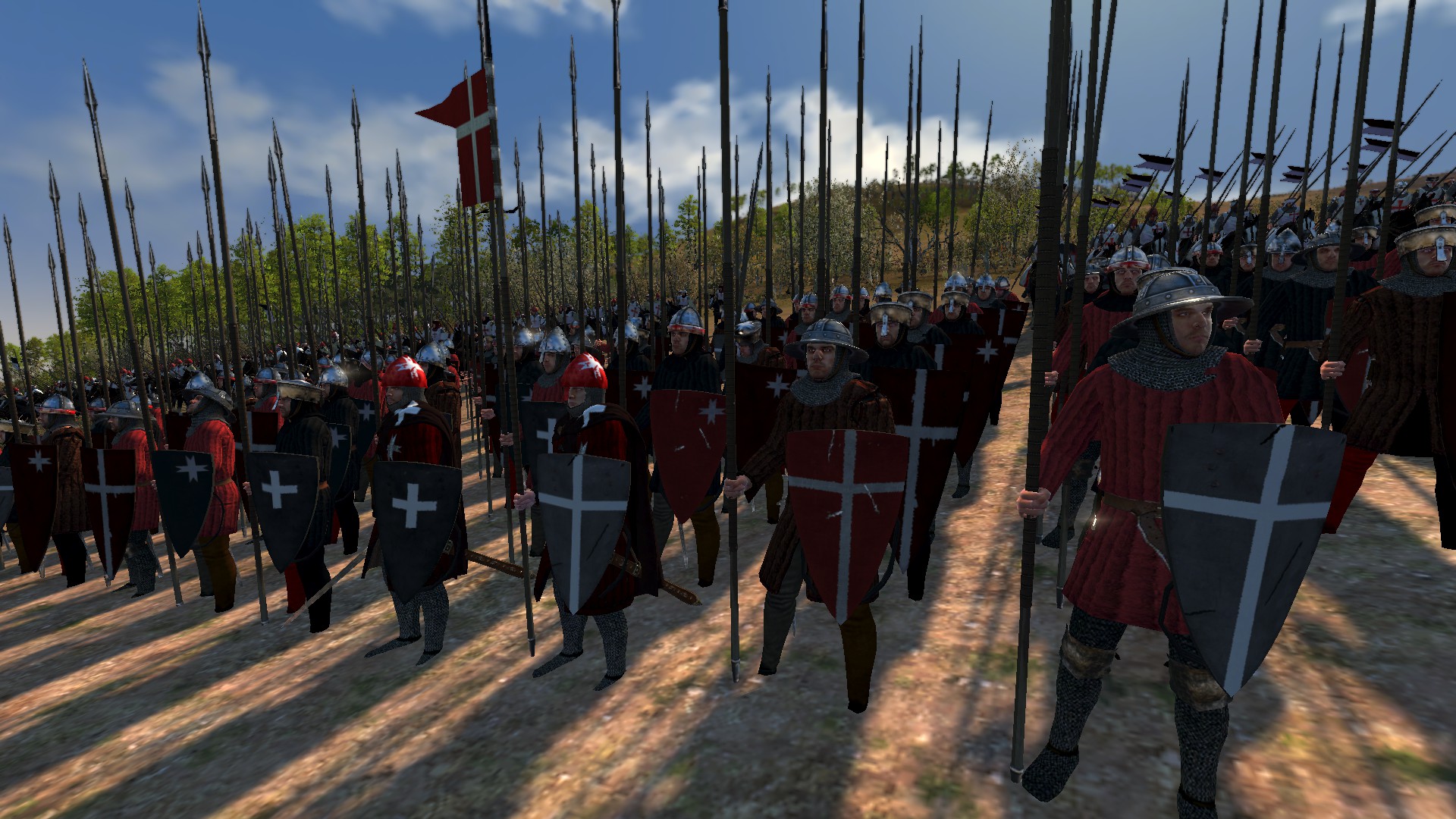
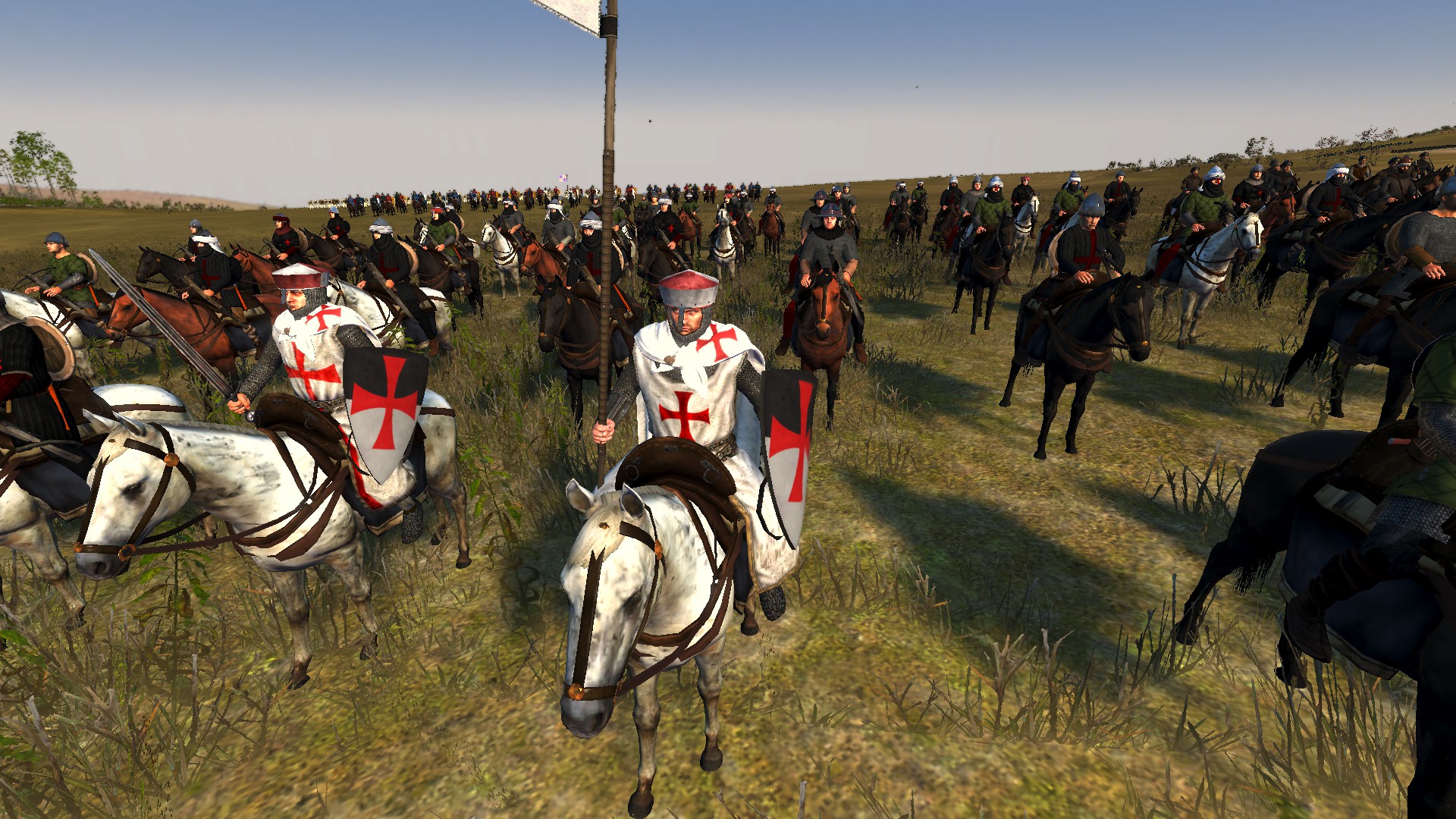

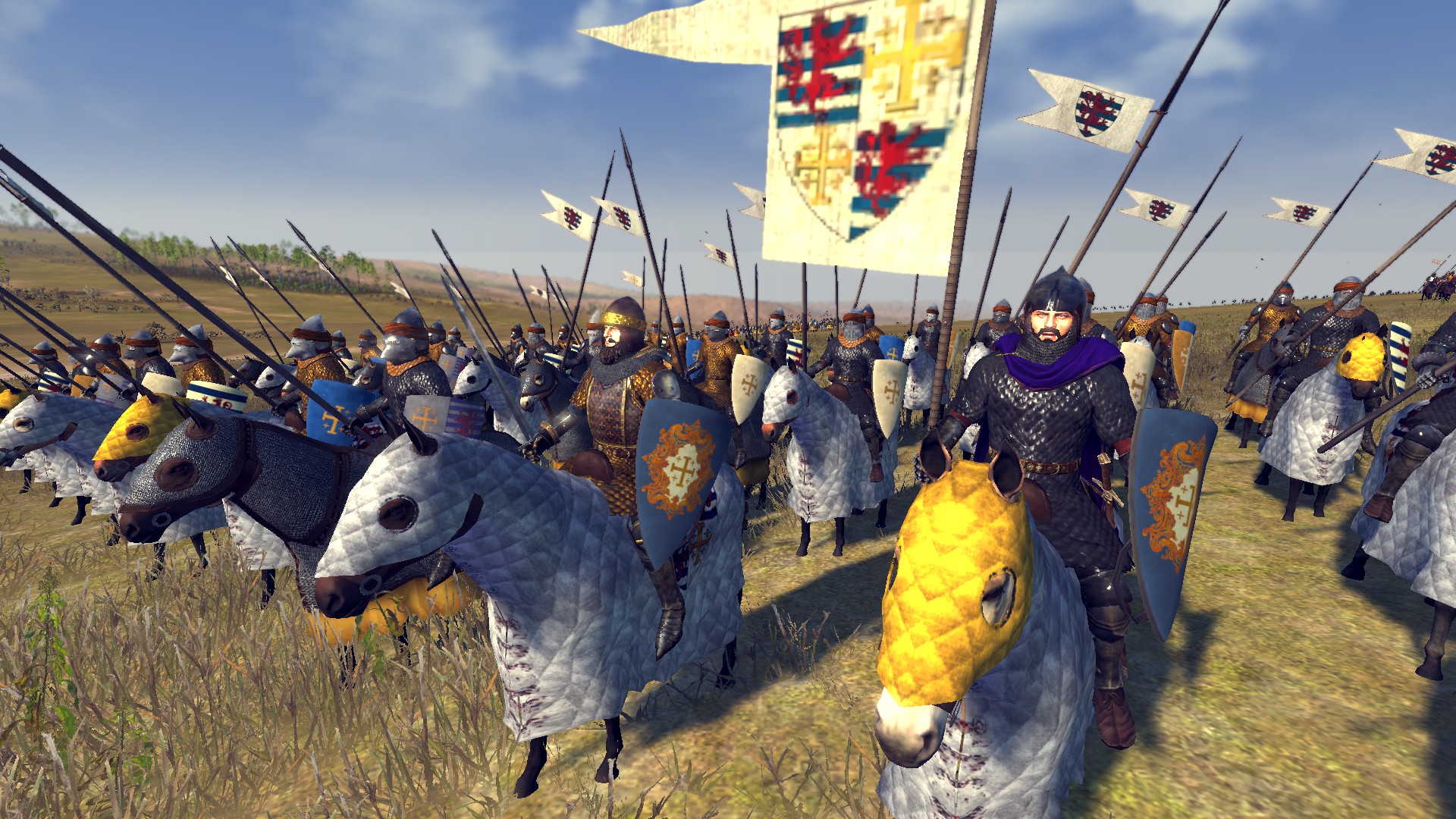

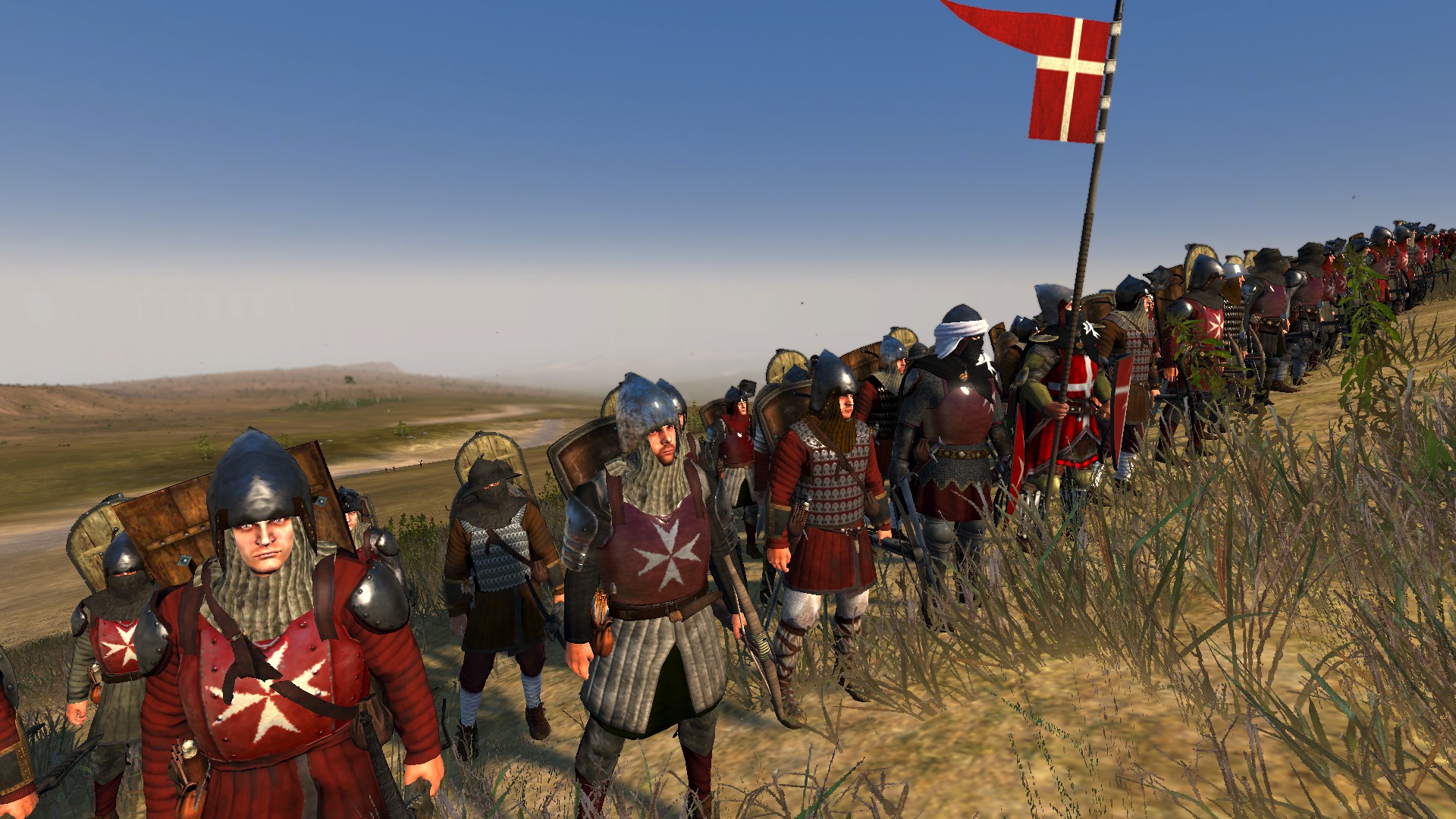
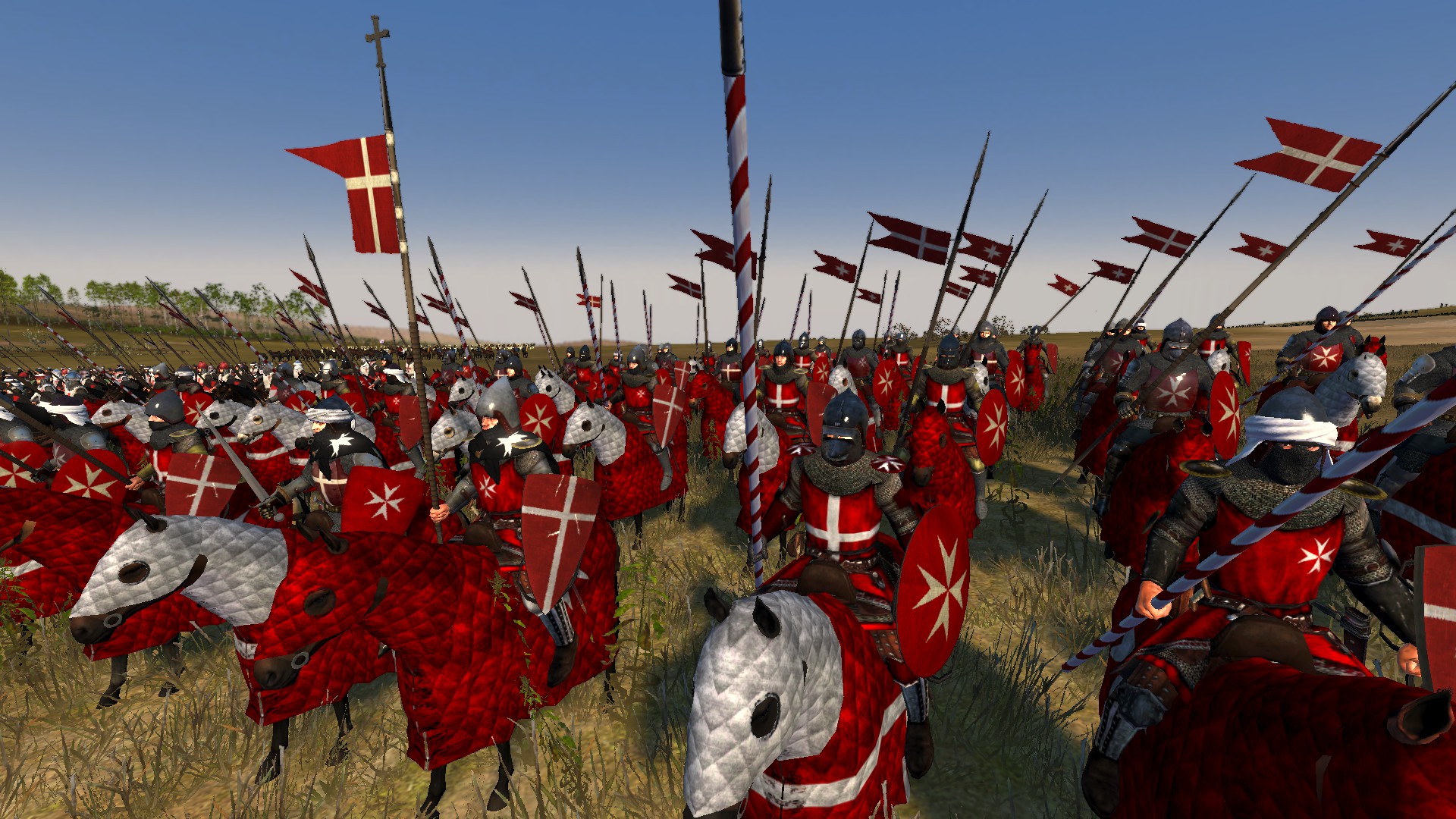

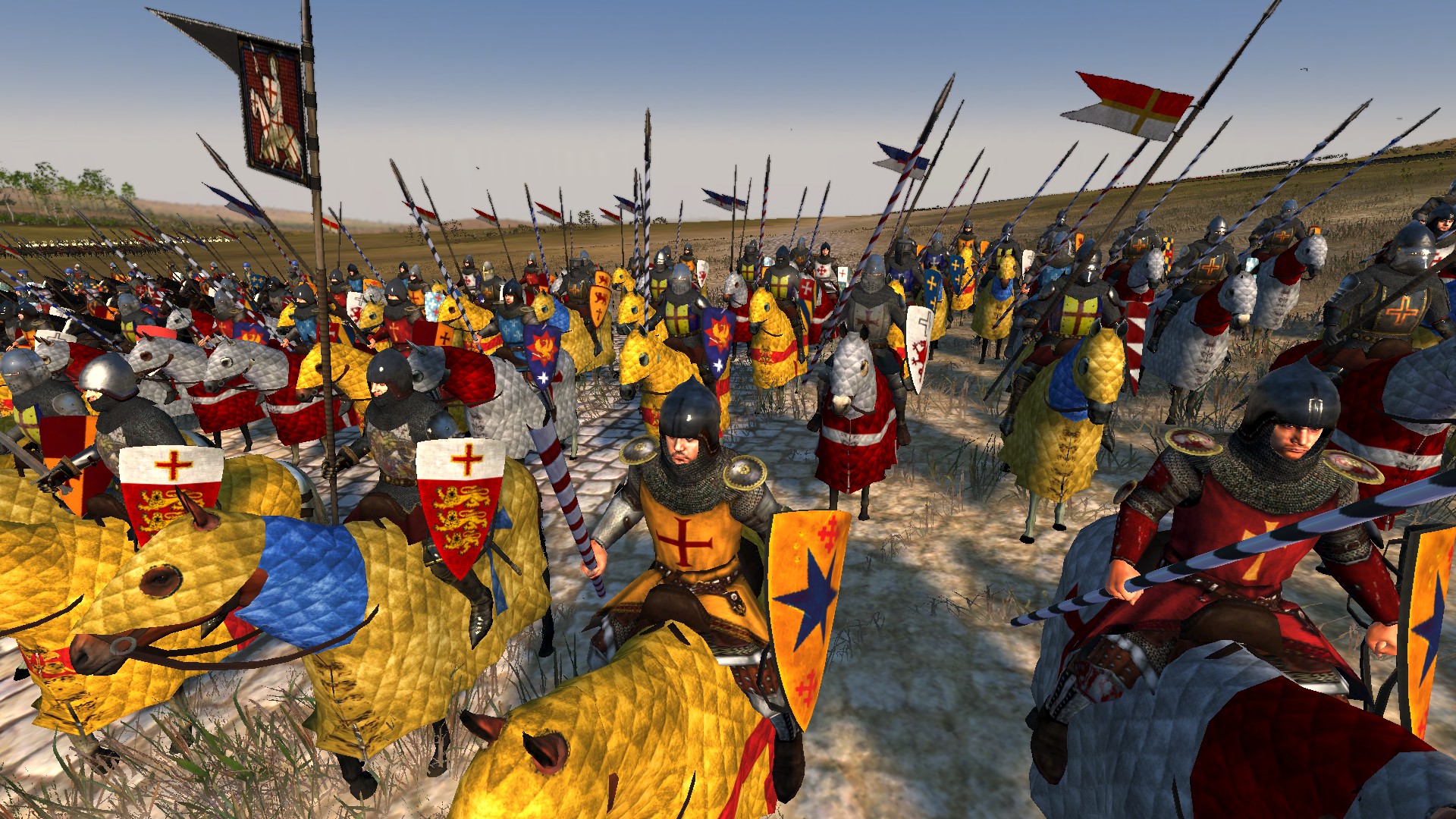
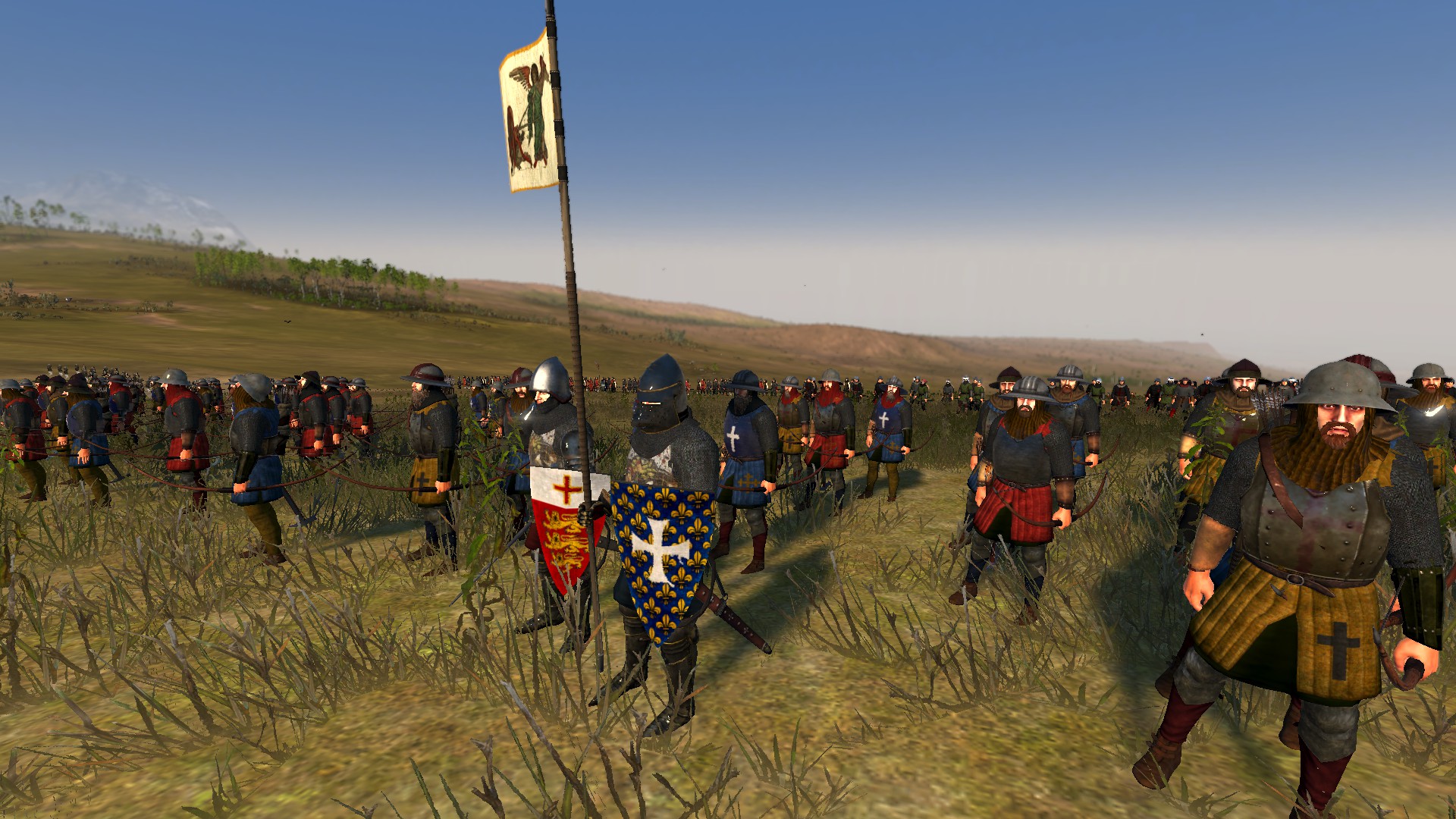
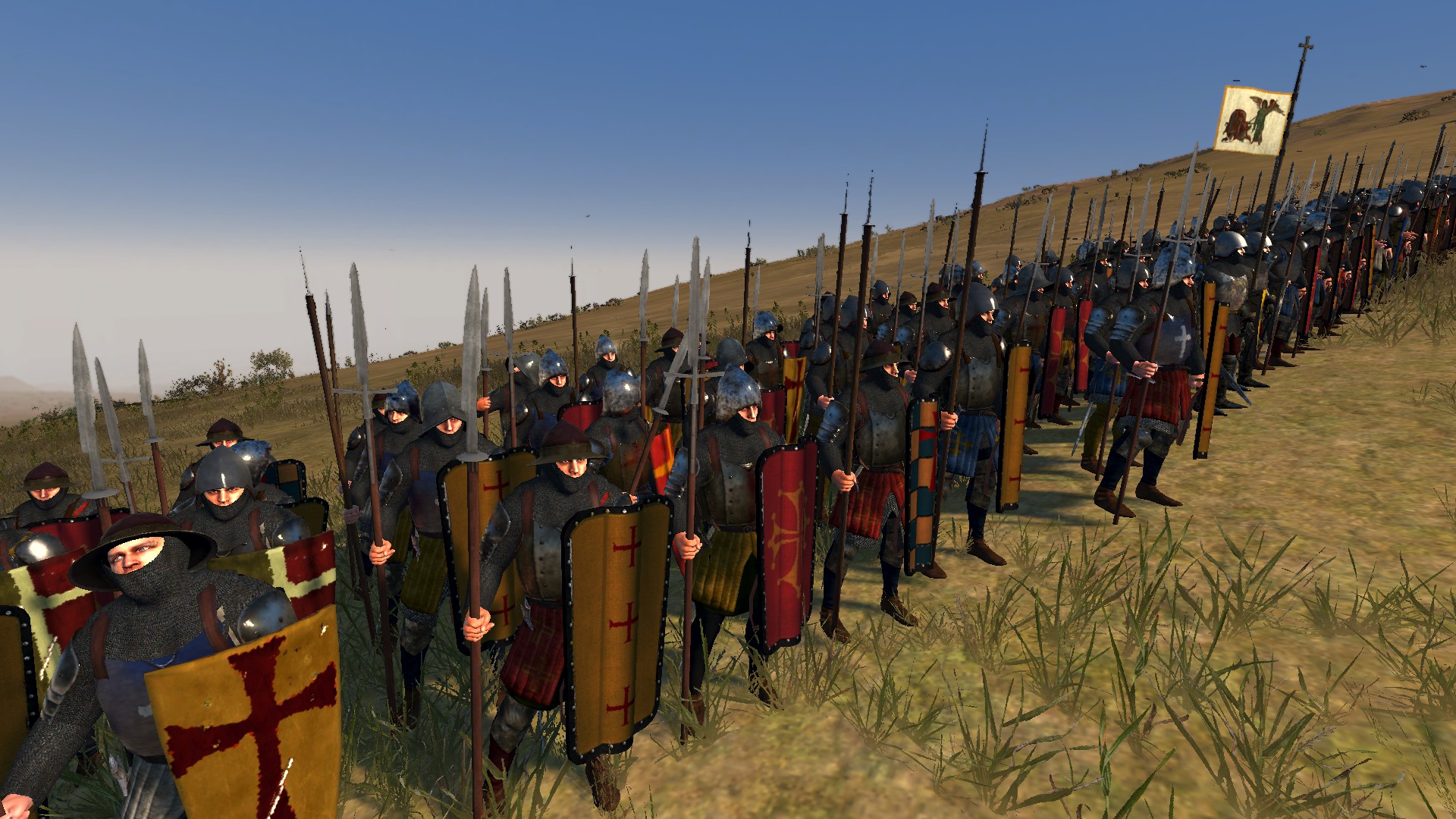


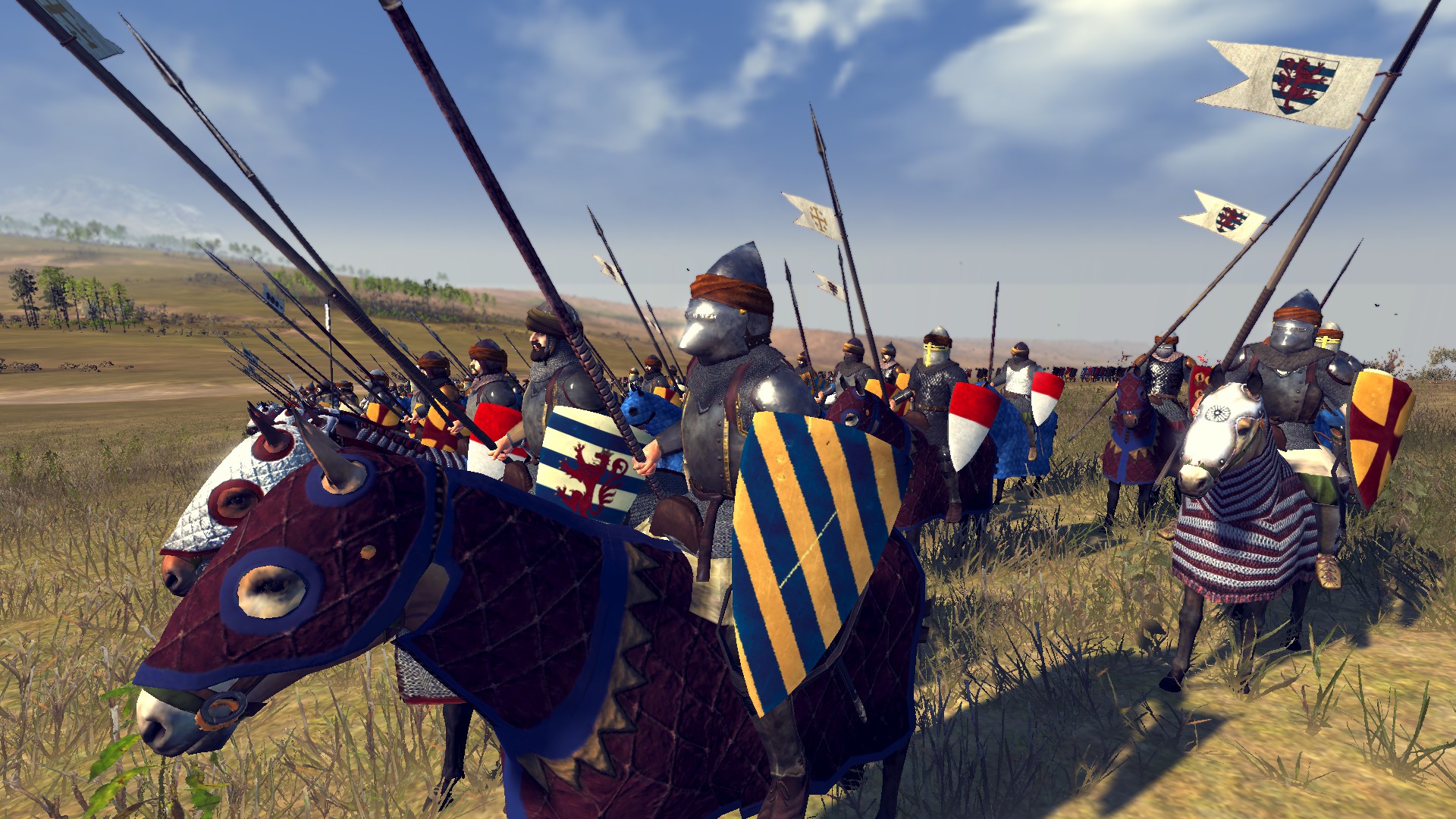

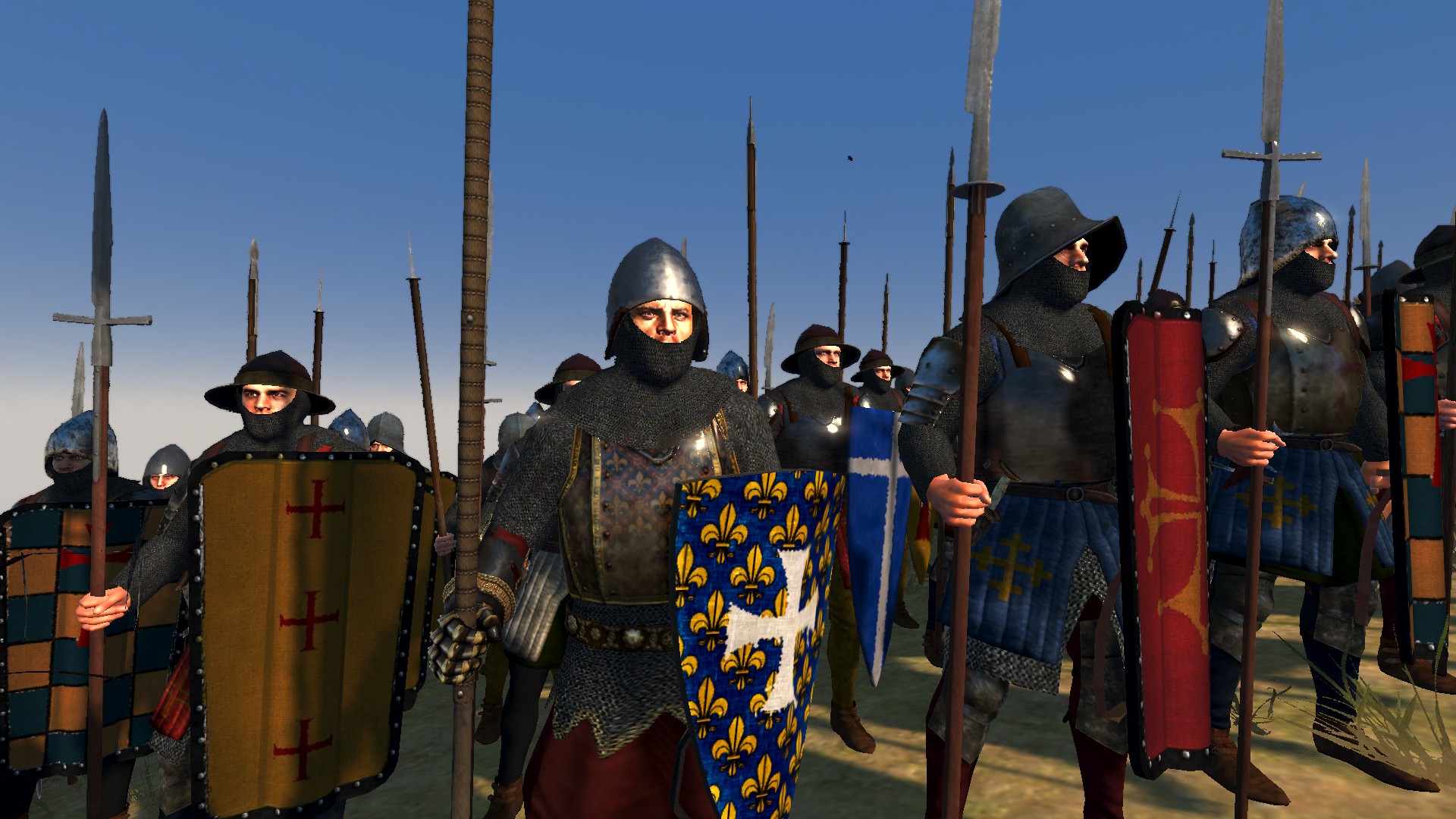
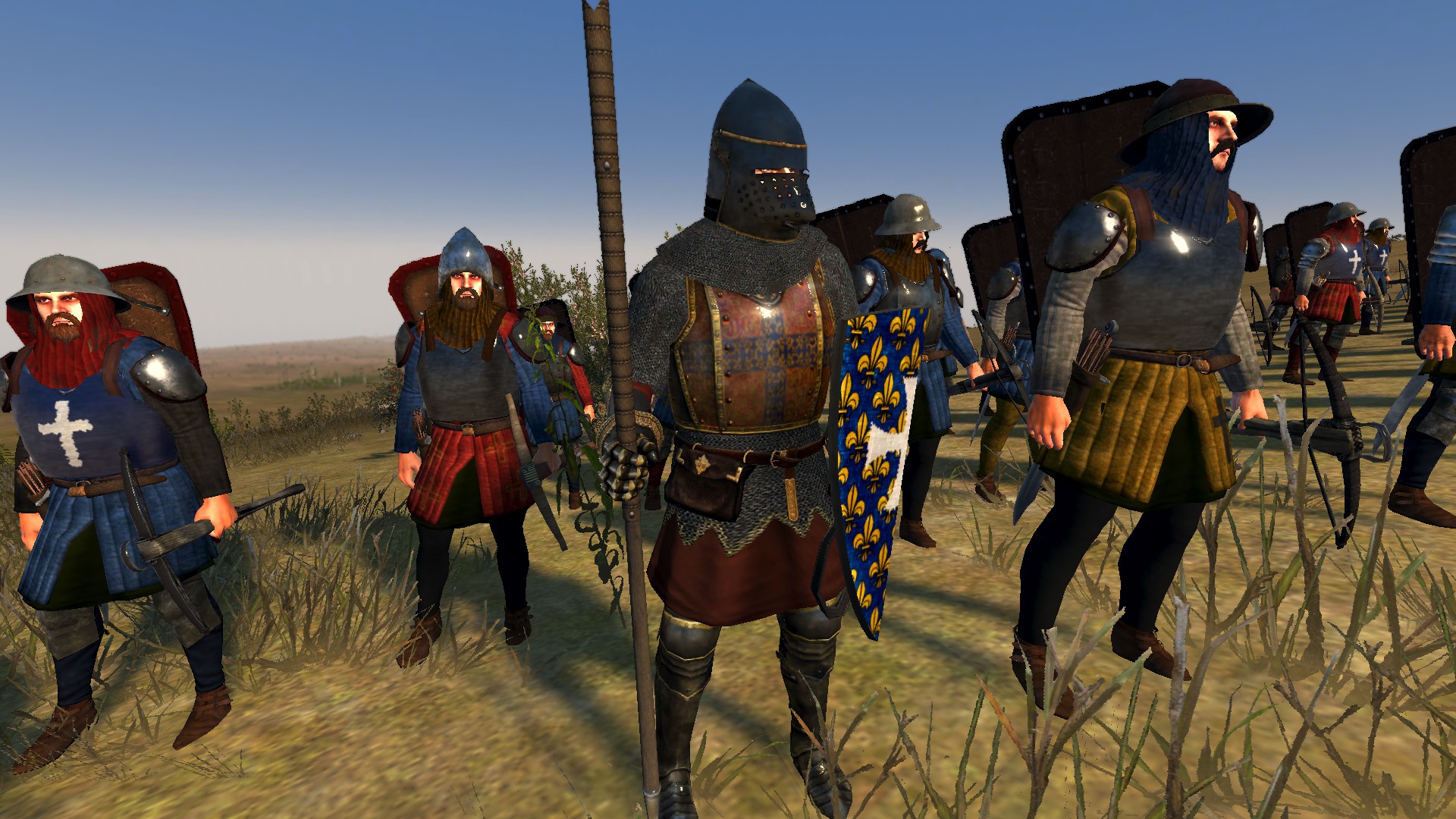



The Crusader States should bring an interesting dynamic to the game, especially on the campaign map. Brilliant work! Keep it up!
could you please tell how to download this mod
Oy Vey
Hnnnng! Can't wait for the full campaign to come out for this! So excited!
I love the history and all the research that went into this. Great work!
how to download this MOD
meeehn when the campaign version of this mod hits...CA might actually learn a thing or two...
its really a sad statement on the part of CA that modders make a better game than they do
I want to play as jerusalem so bad
Do you think we can get some poulaine and crusader swordsmen? or at least a dismounted version of them withought spears. they would be extremely badass standing next to the knightly brotherhoods.
As with Creative Assembly's previous depictions you unfortunately did not include the Teutonic Order in the Kingdom of Jerusalem (based in Acre where the headquarters were based until the Fall of Acre 1291). Yes you have made a different faction as did CA which is accurate and true as they operated in Northern Europe for centuries post, however the addition of a few Teutonic troops as with the Templar/Hospitaller versions (eg knights/sergeants) under the Kingdom of Jerusalem would have been great and I hope you consider this, as a medieval history fan, having the ability to accurately roleplay Kingdom of Jerusalem is something I have been hoping for for years. Thank you for your consideration and your hard work
This comment is currently awaiting admin approval, join now to view.
How bad units of the Kingdom looking! How can here be shirts and default scales? Just make the knights of Jerusalem, get rid of this light armor from the knights, make the Kingdom of Heaven closer to the Holy Land!